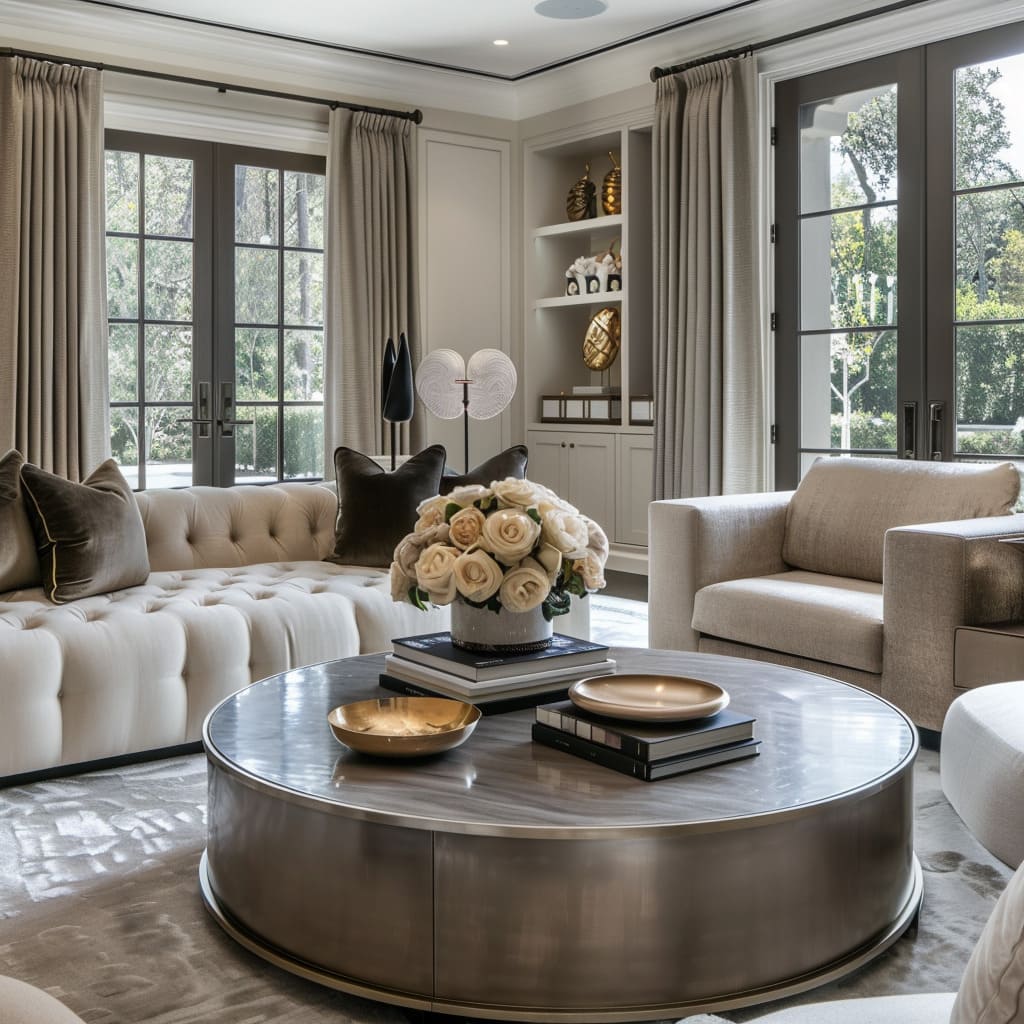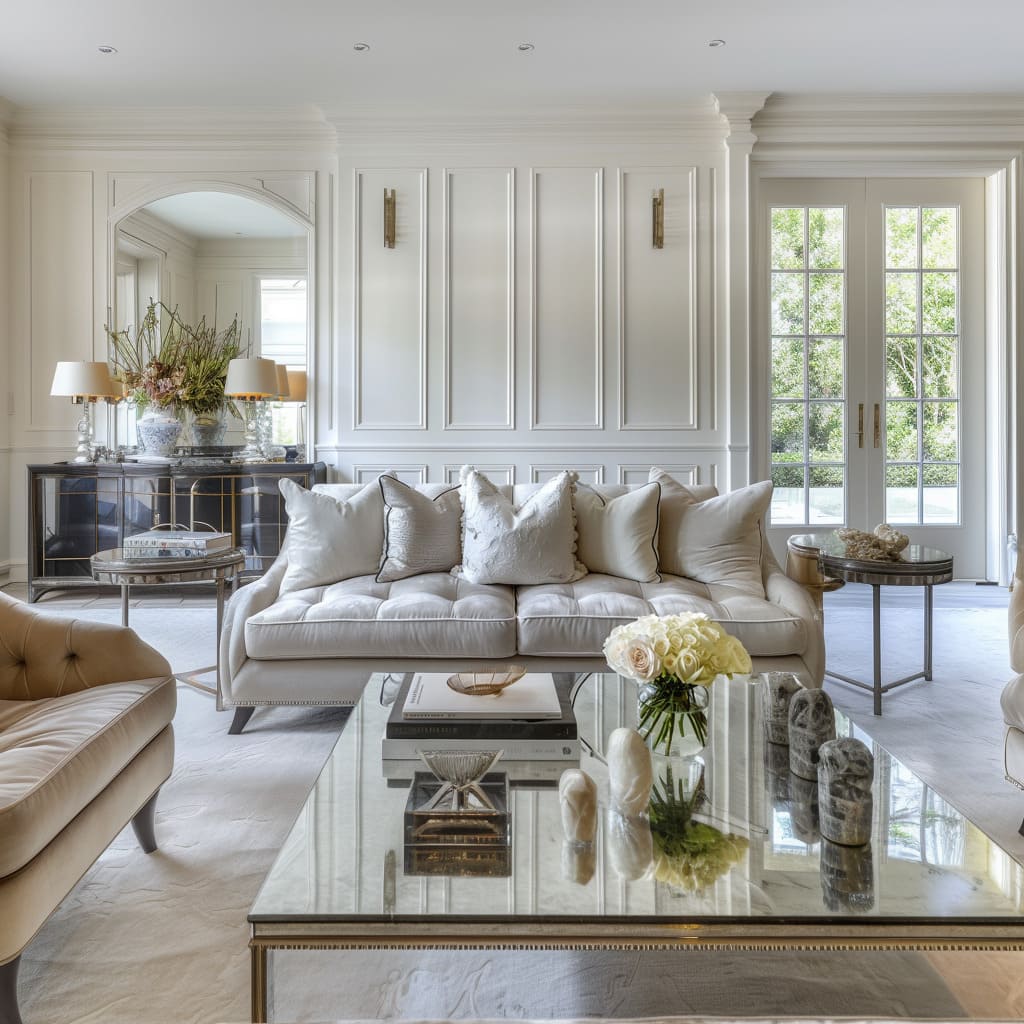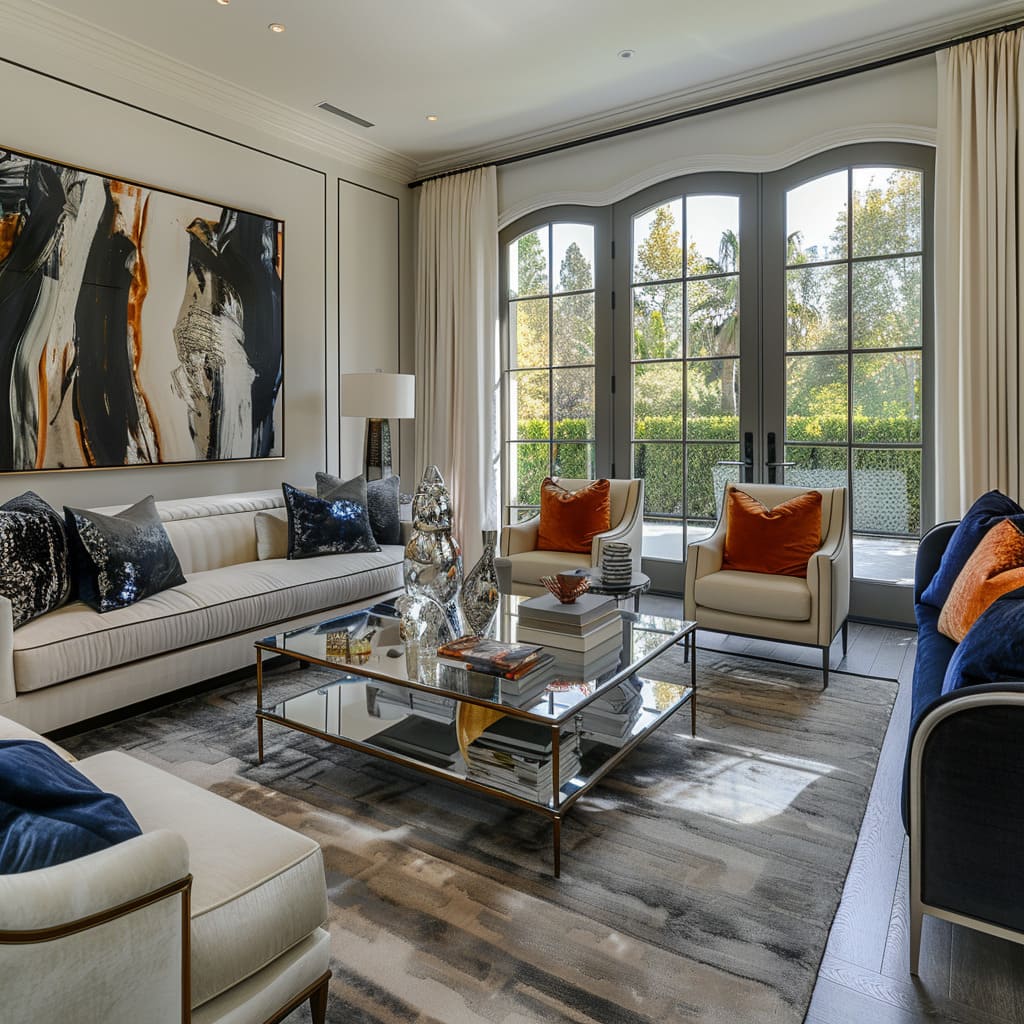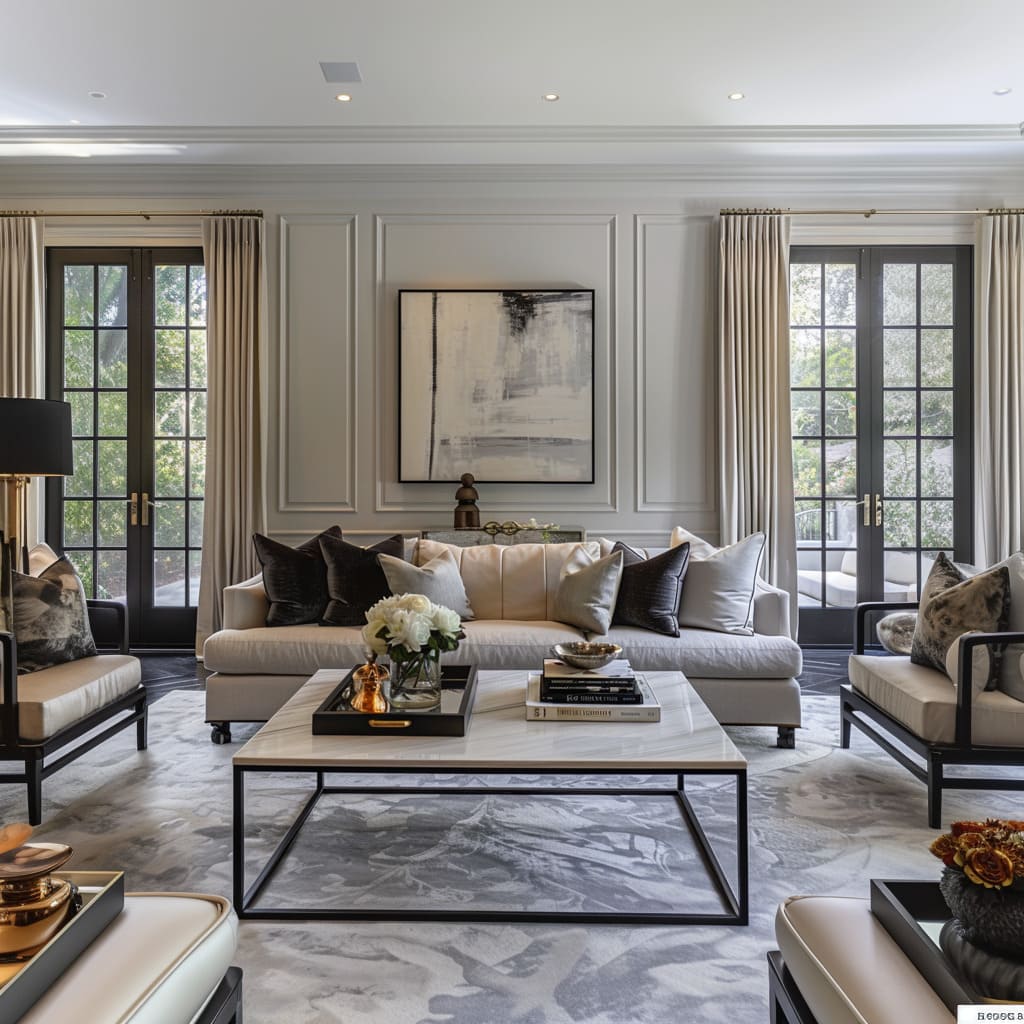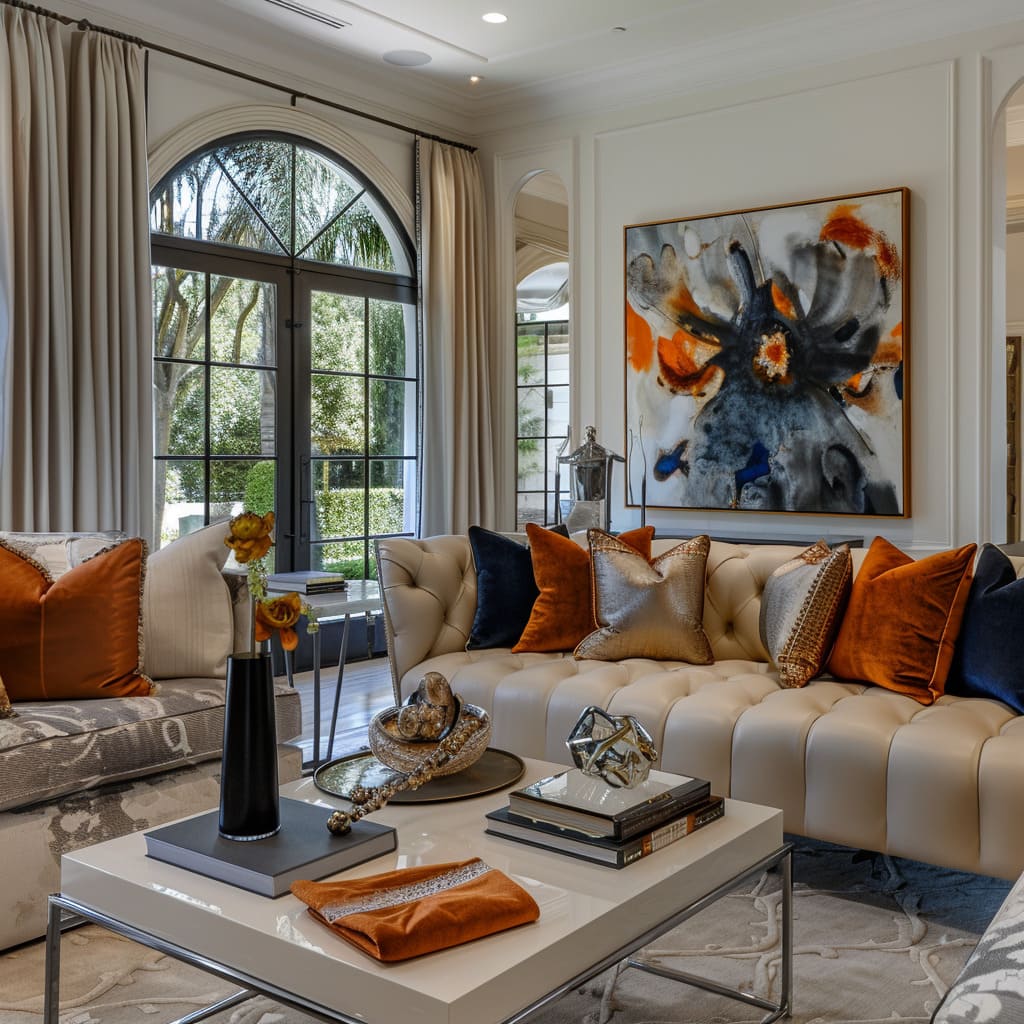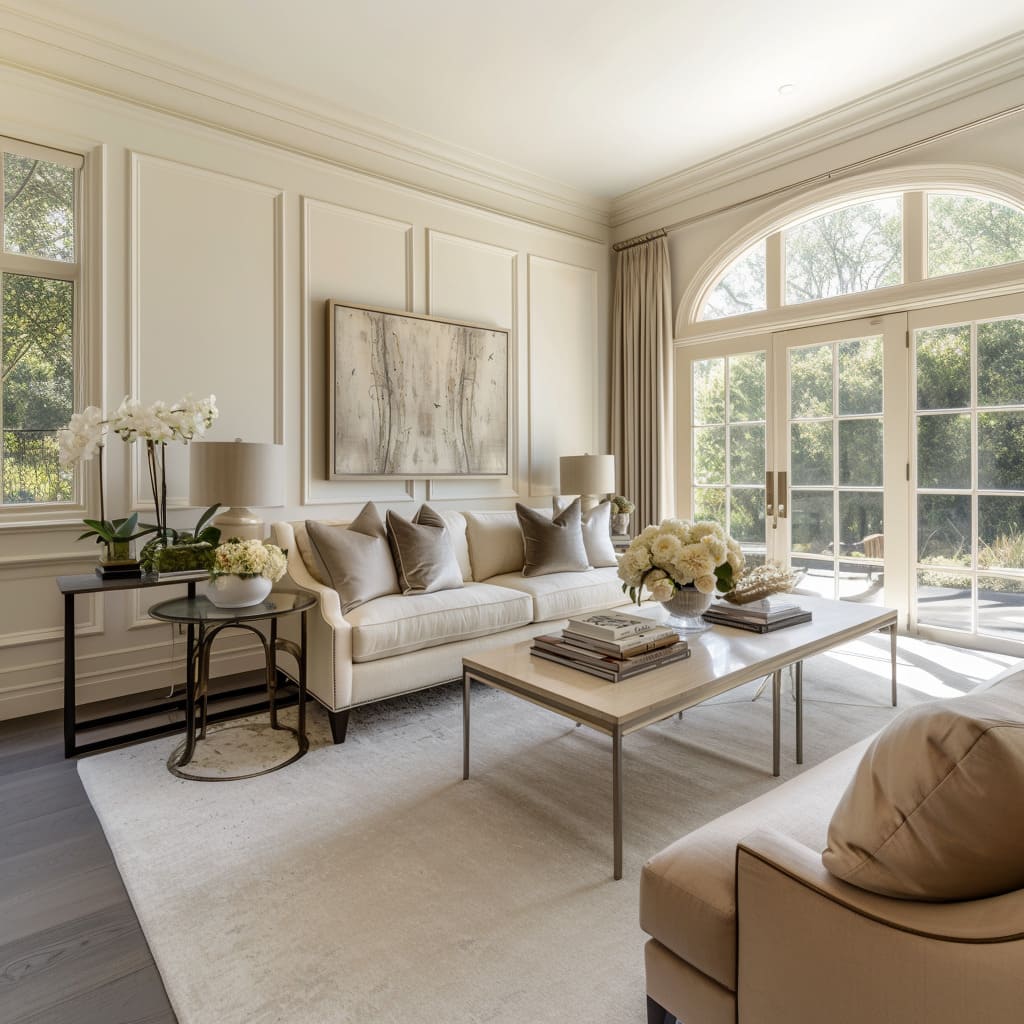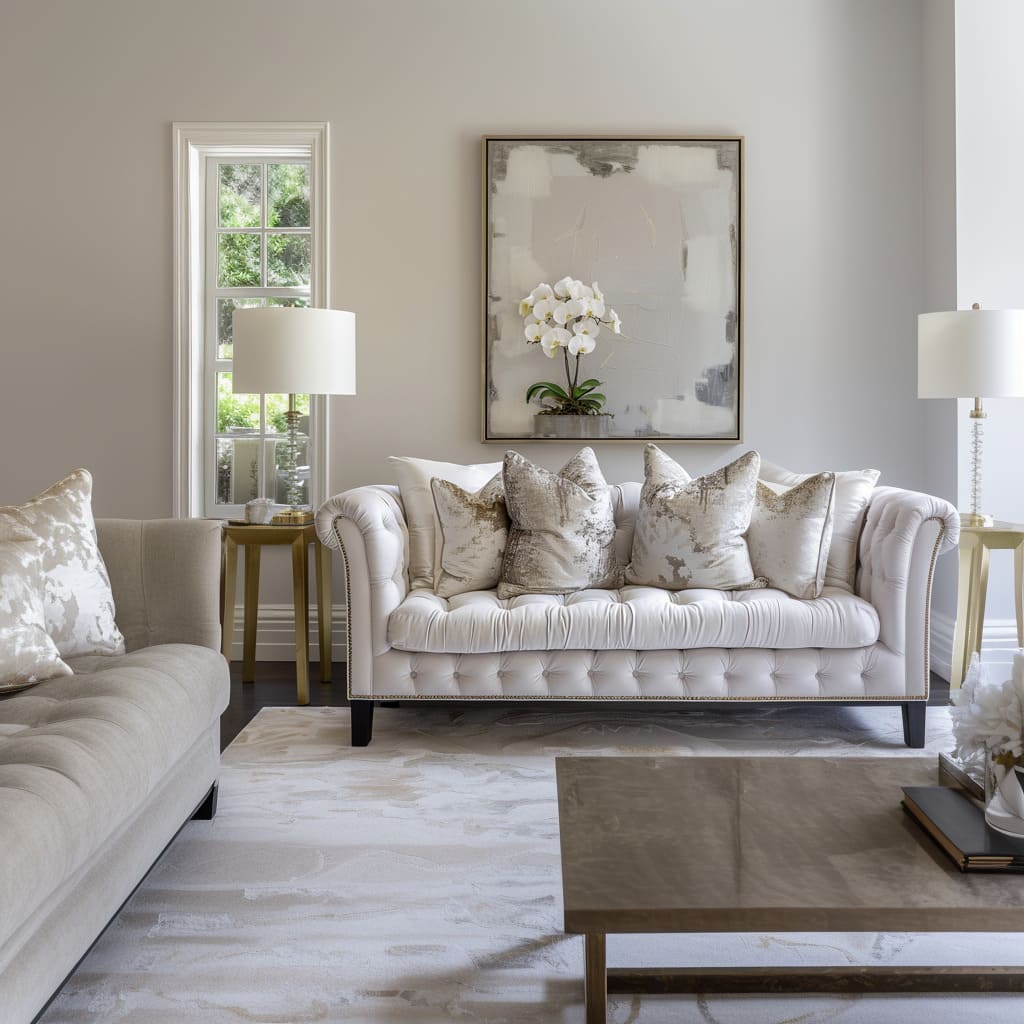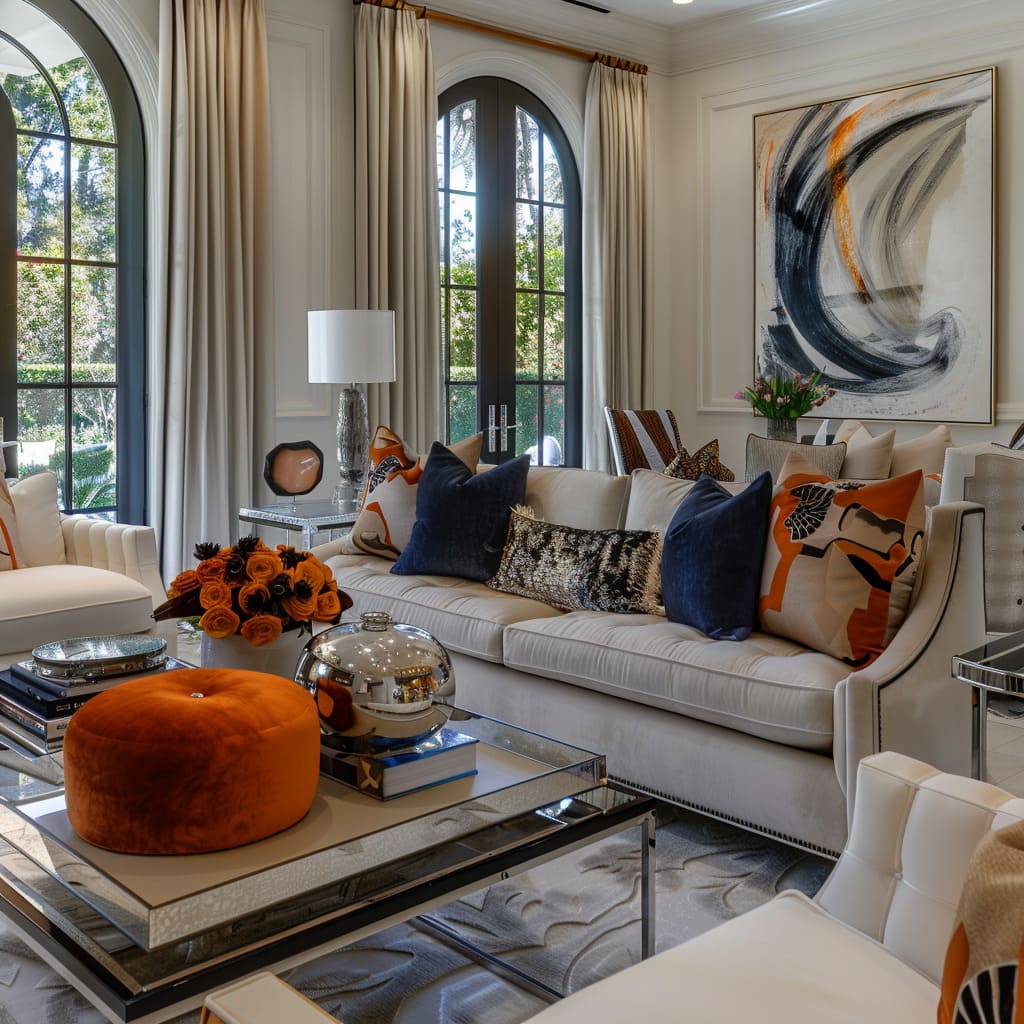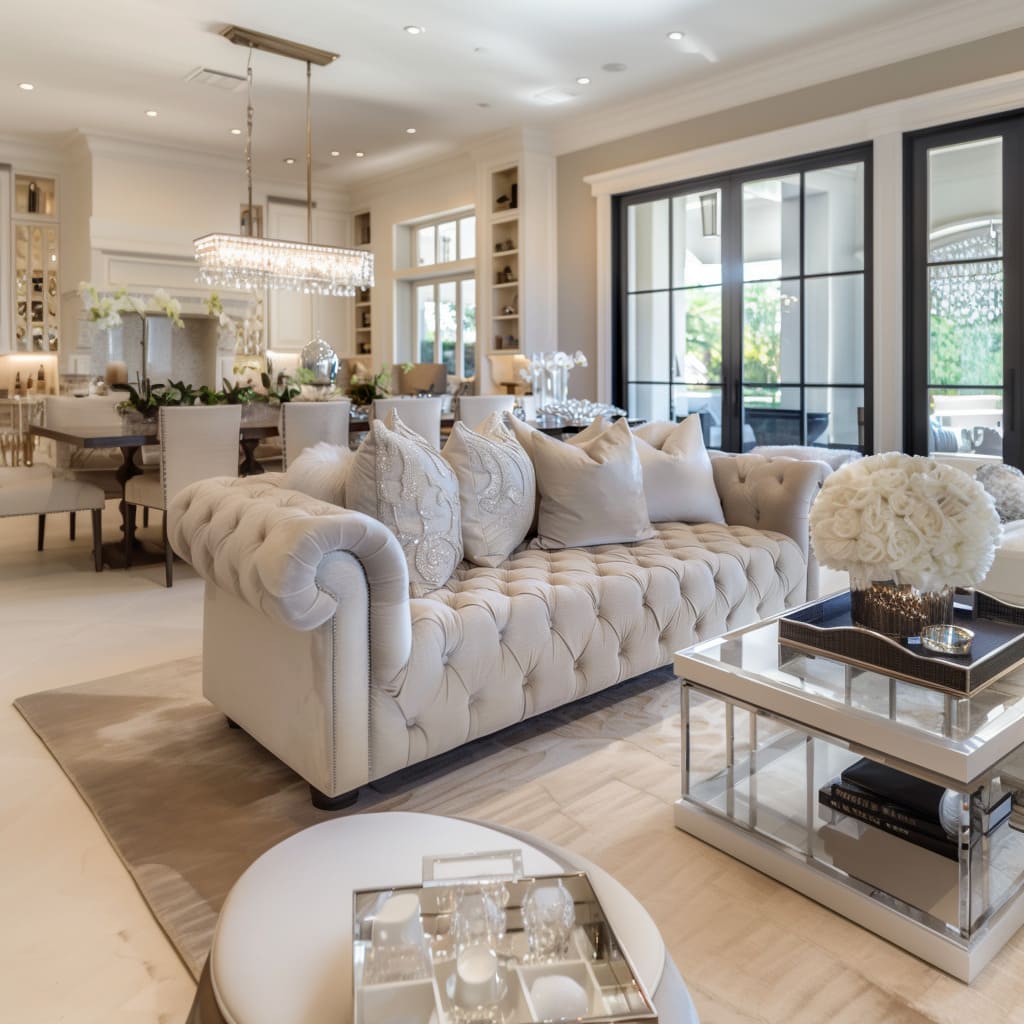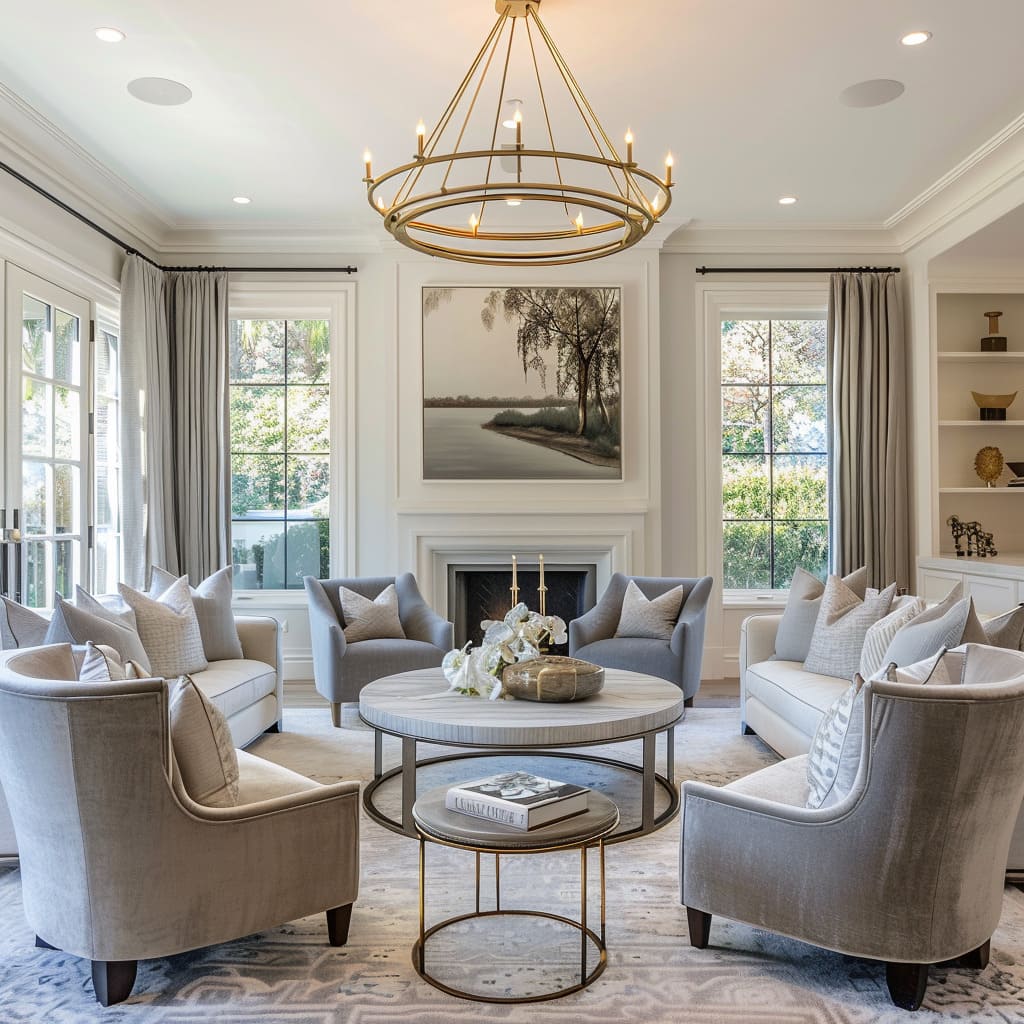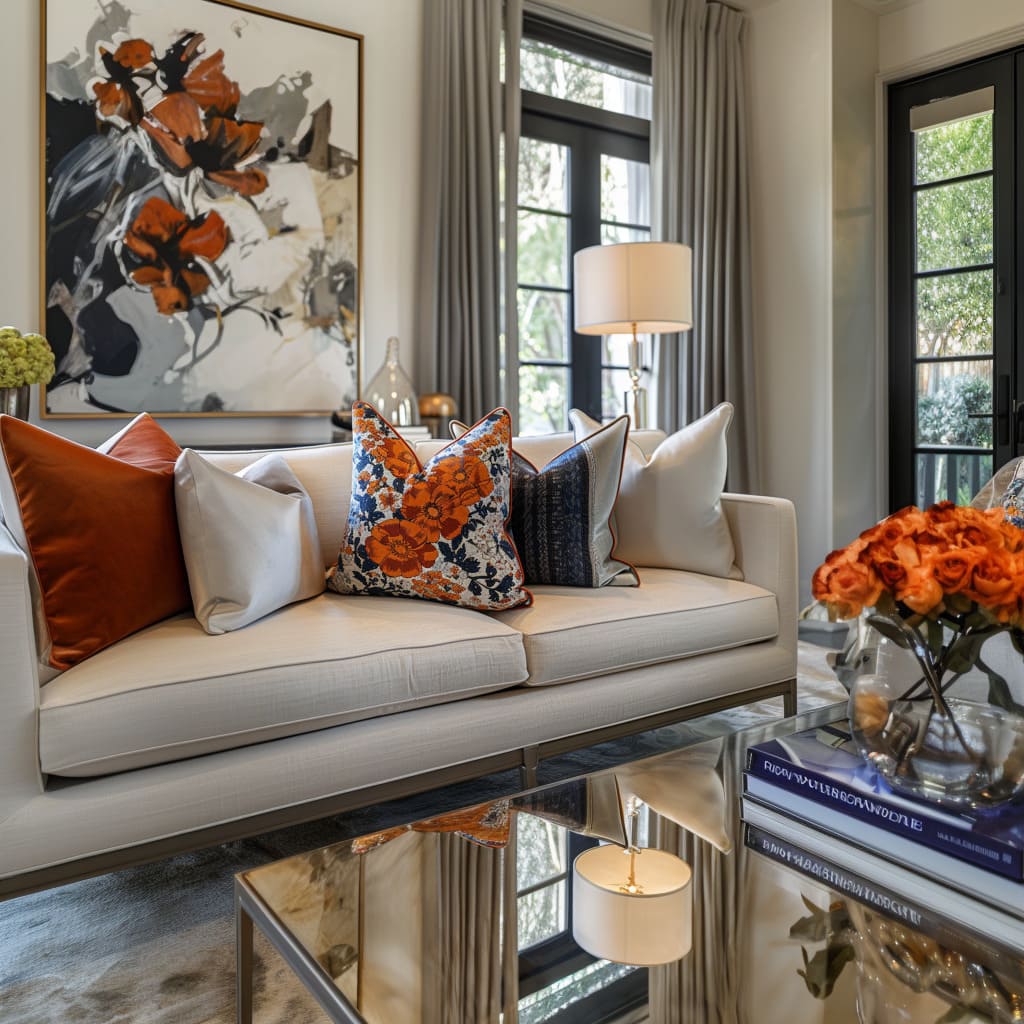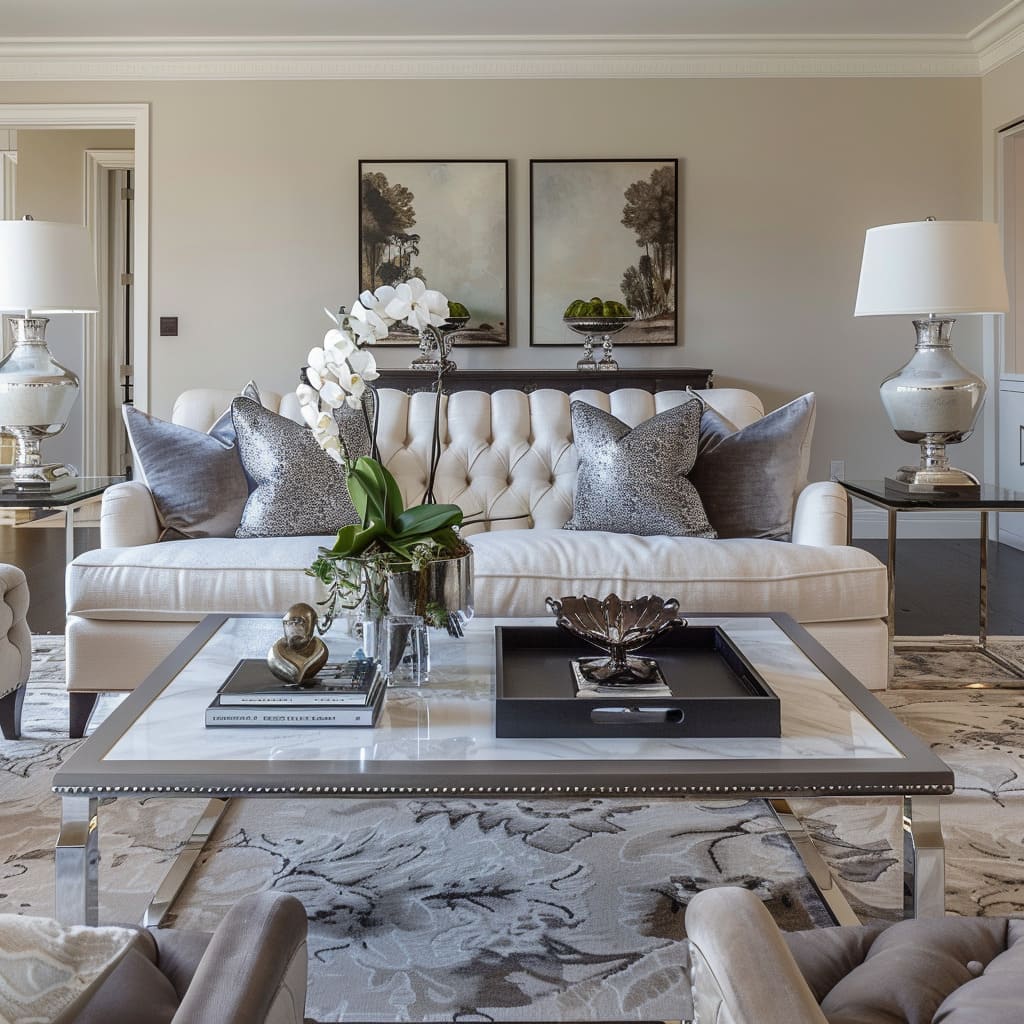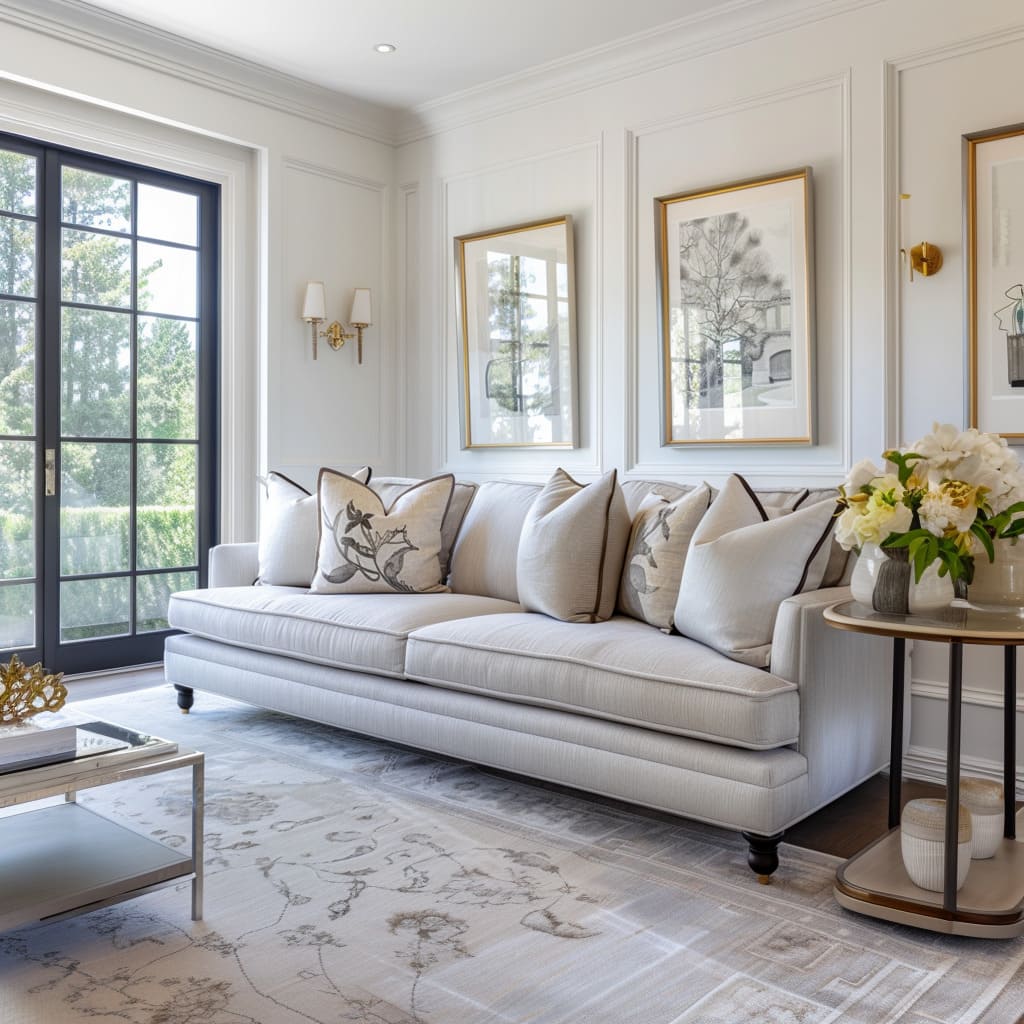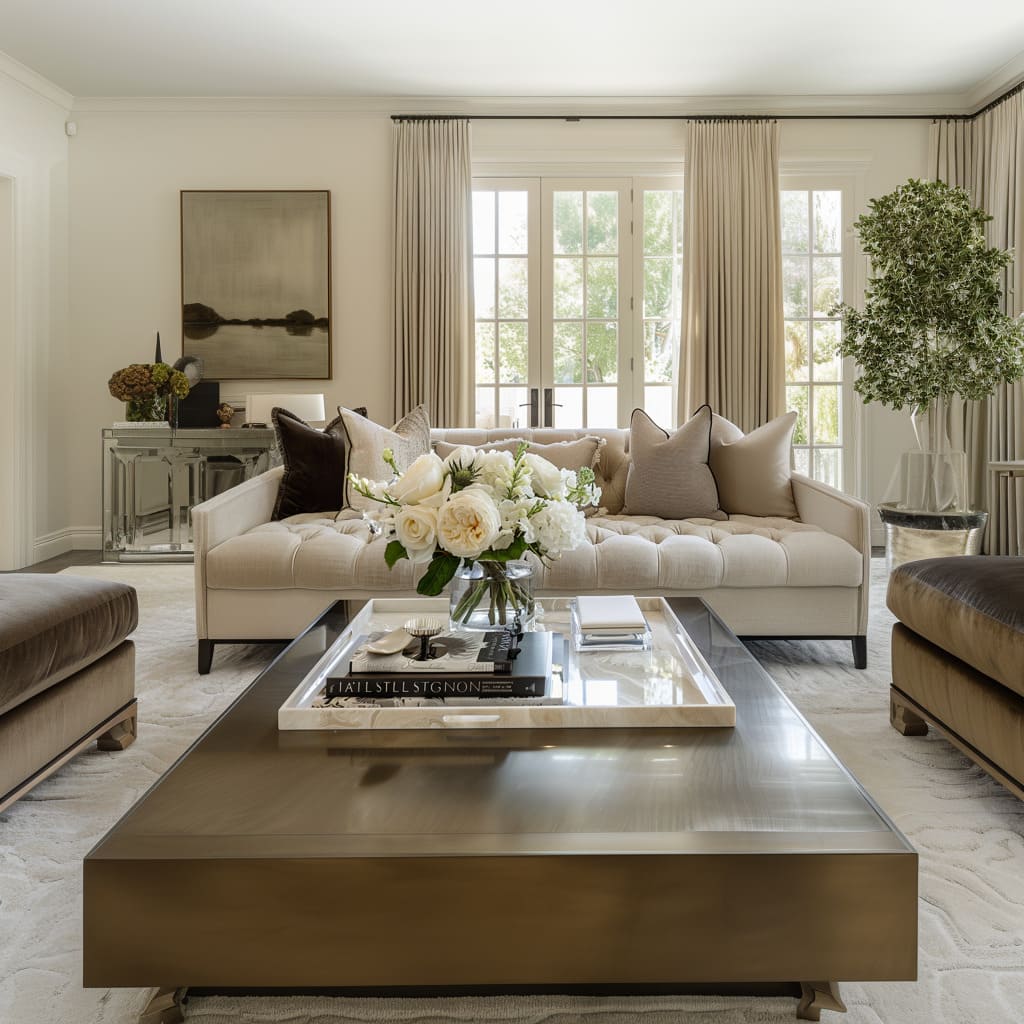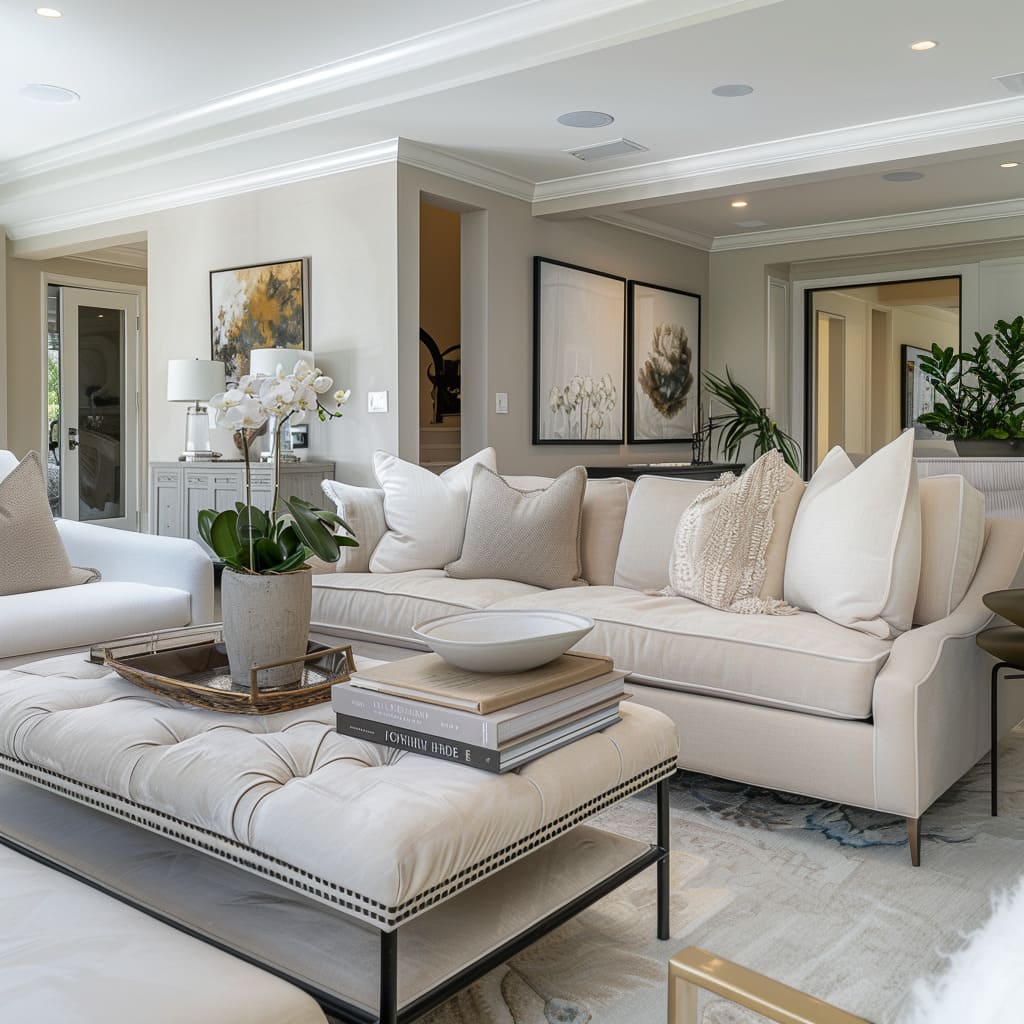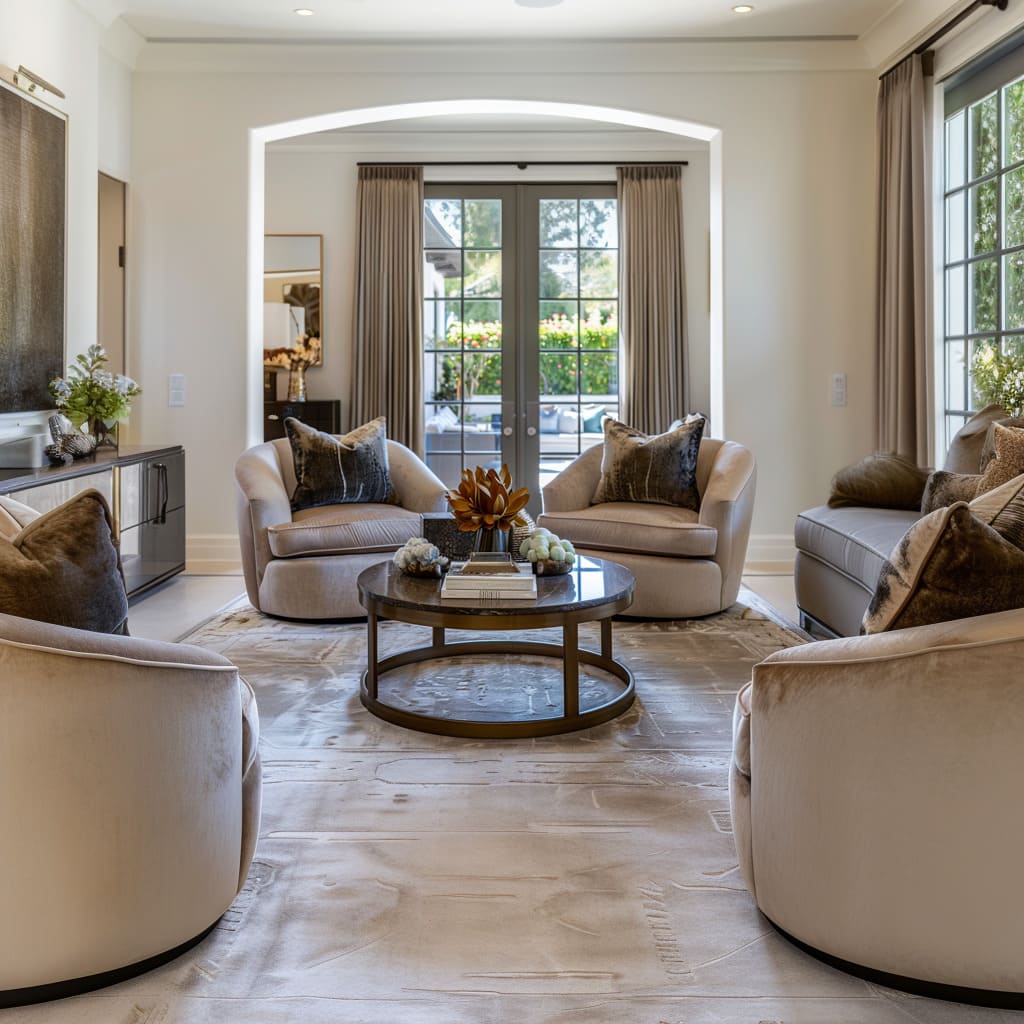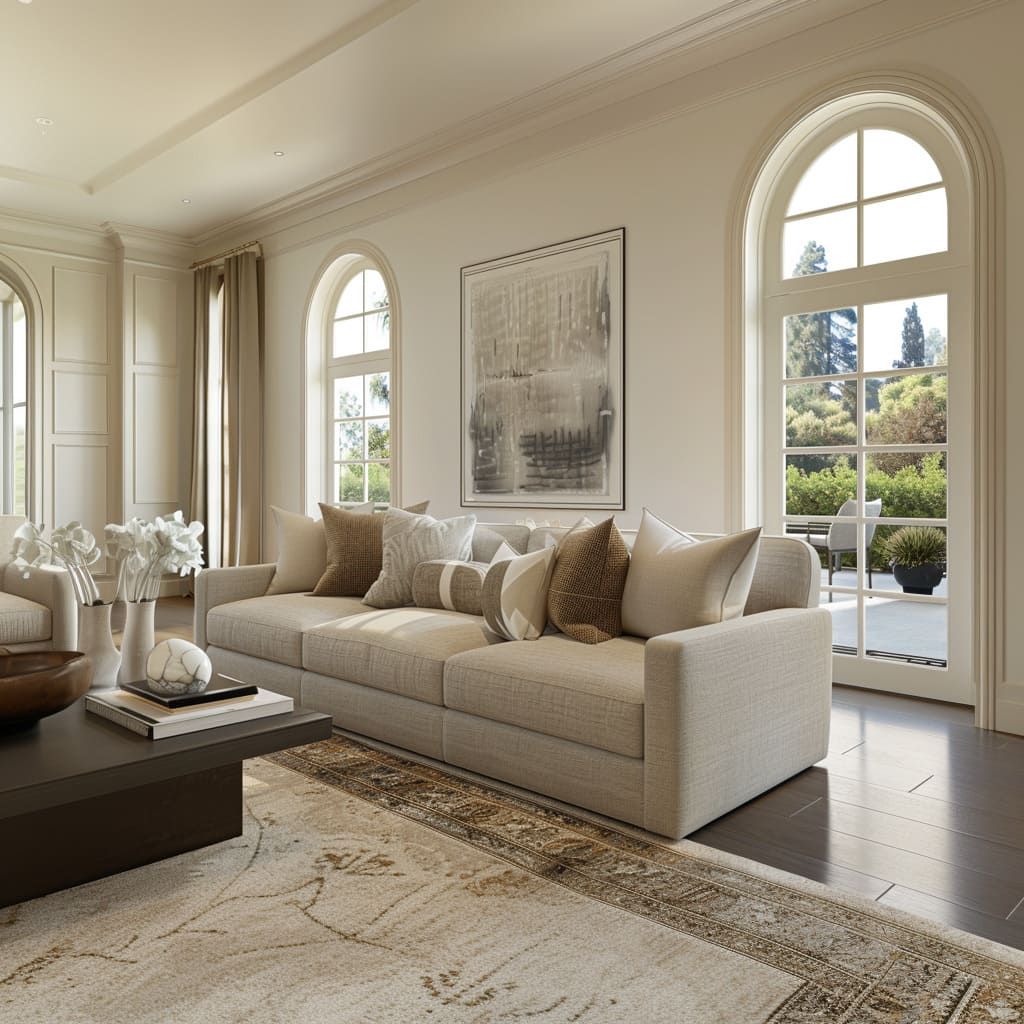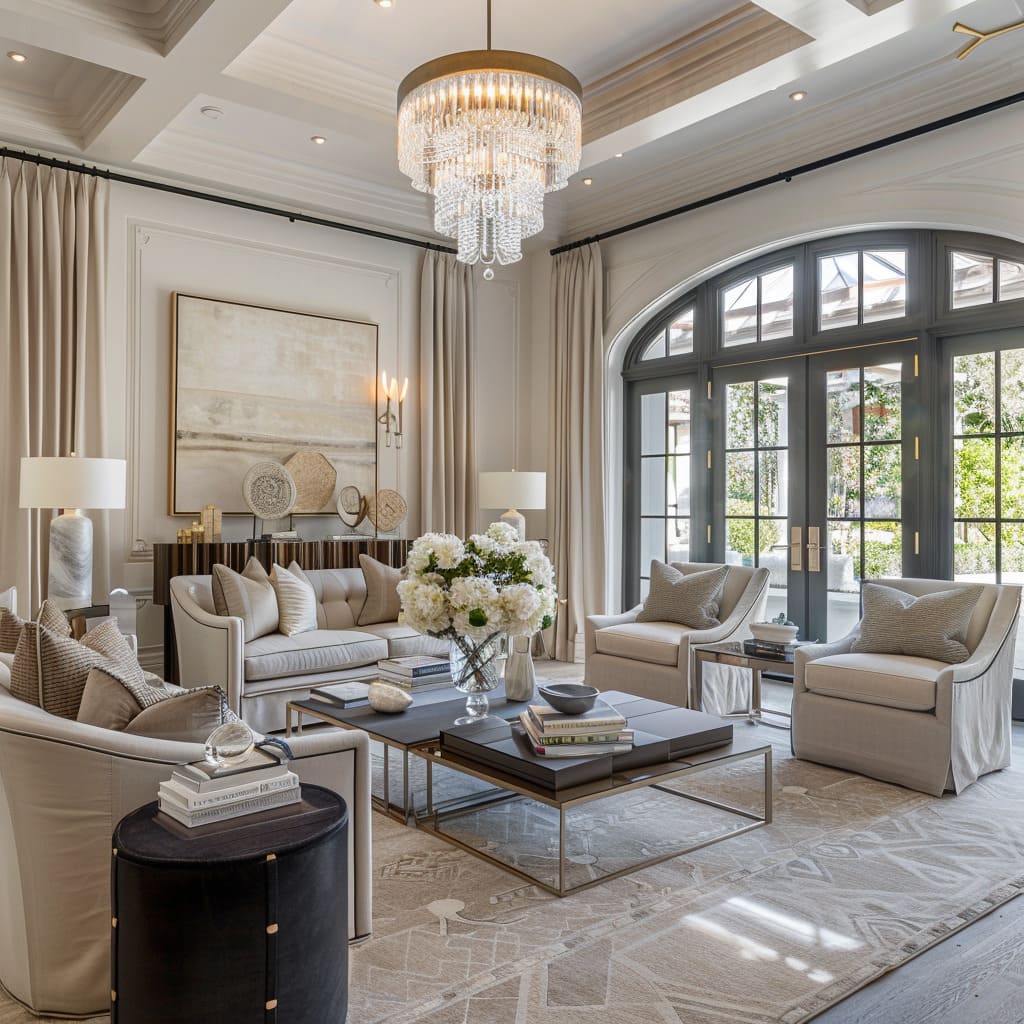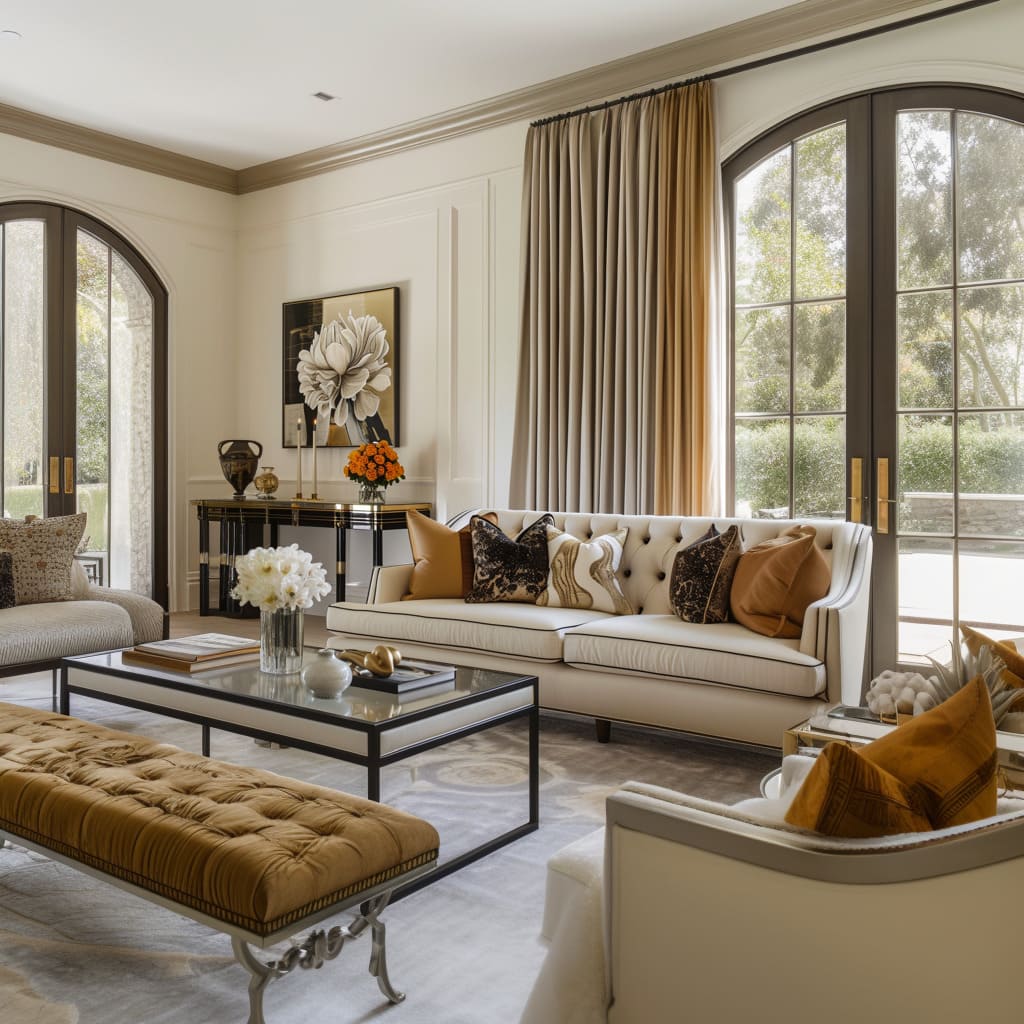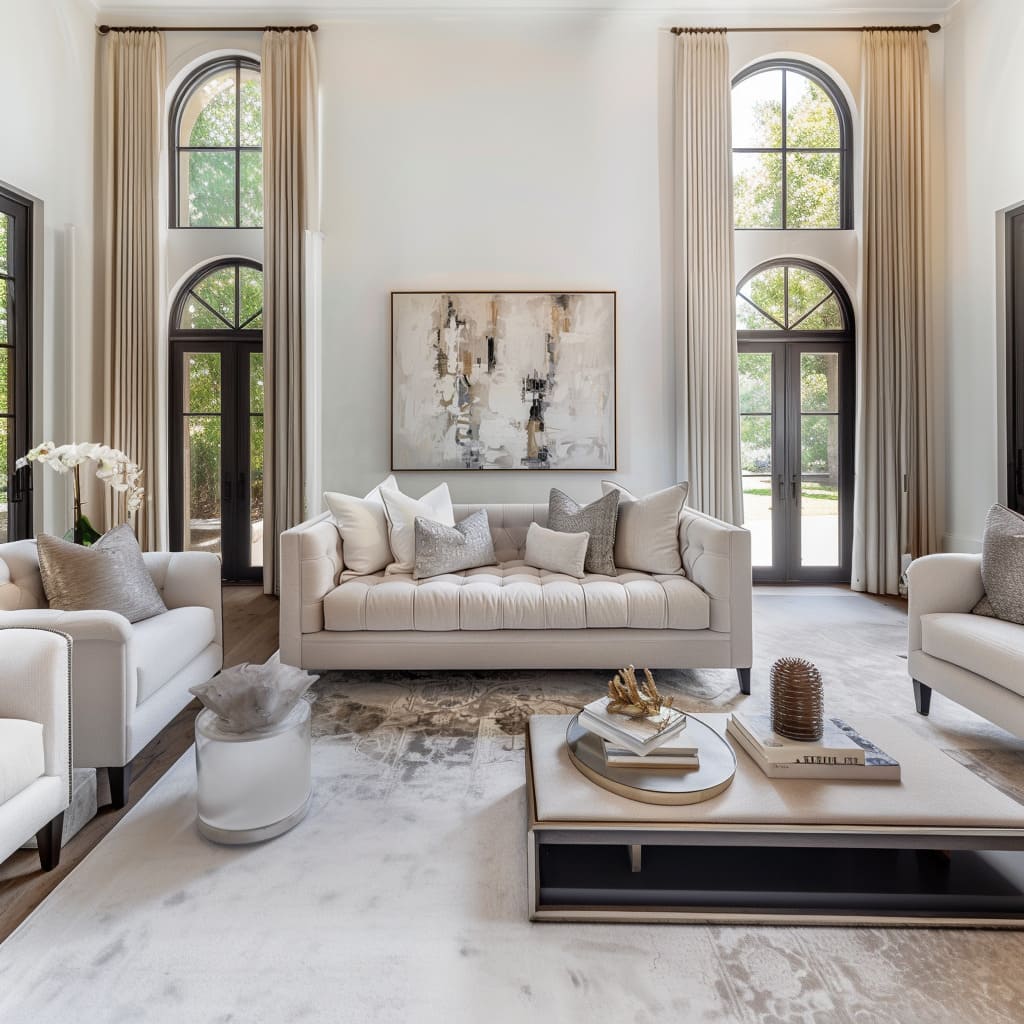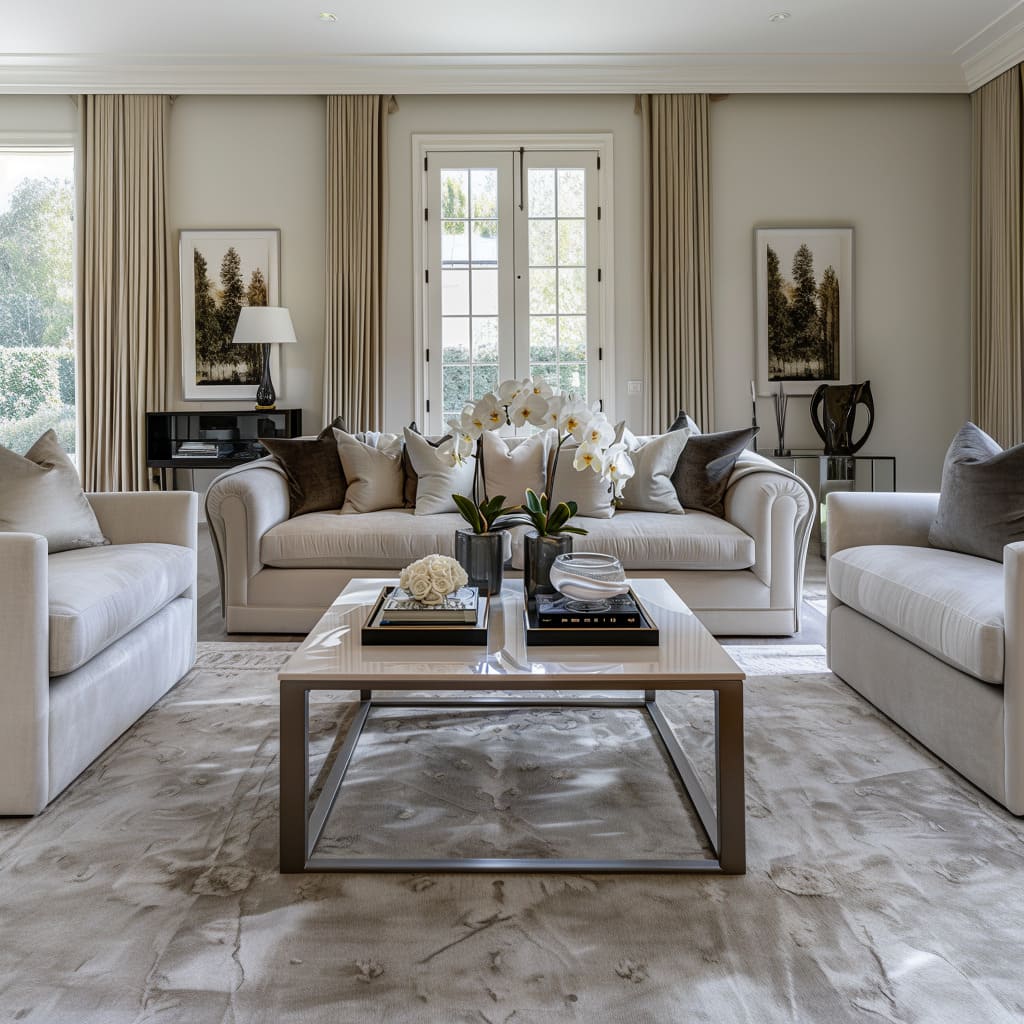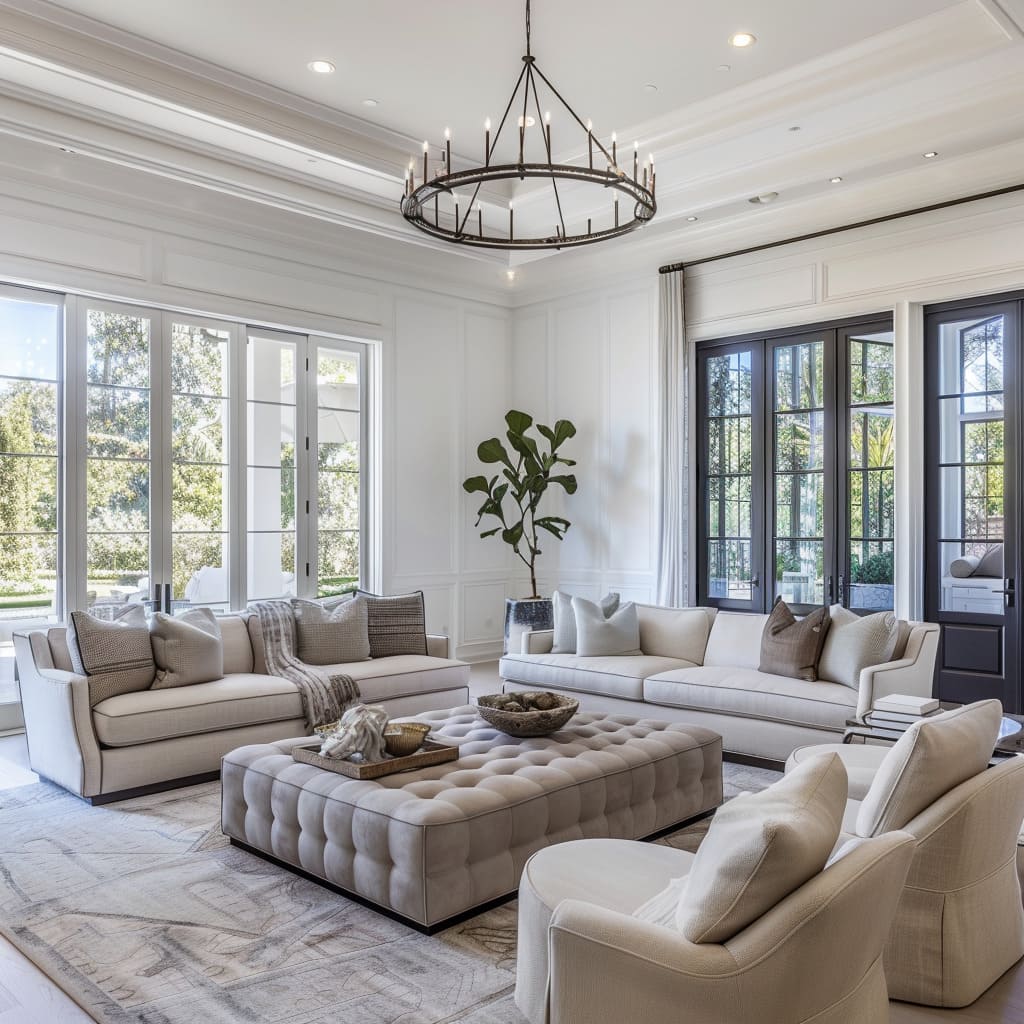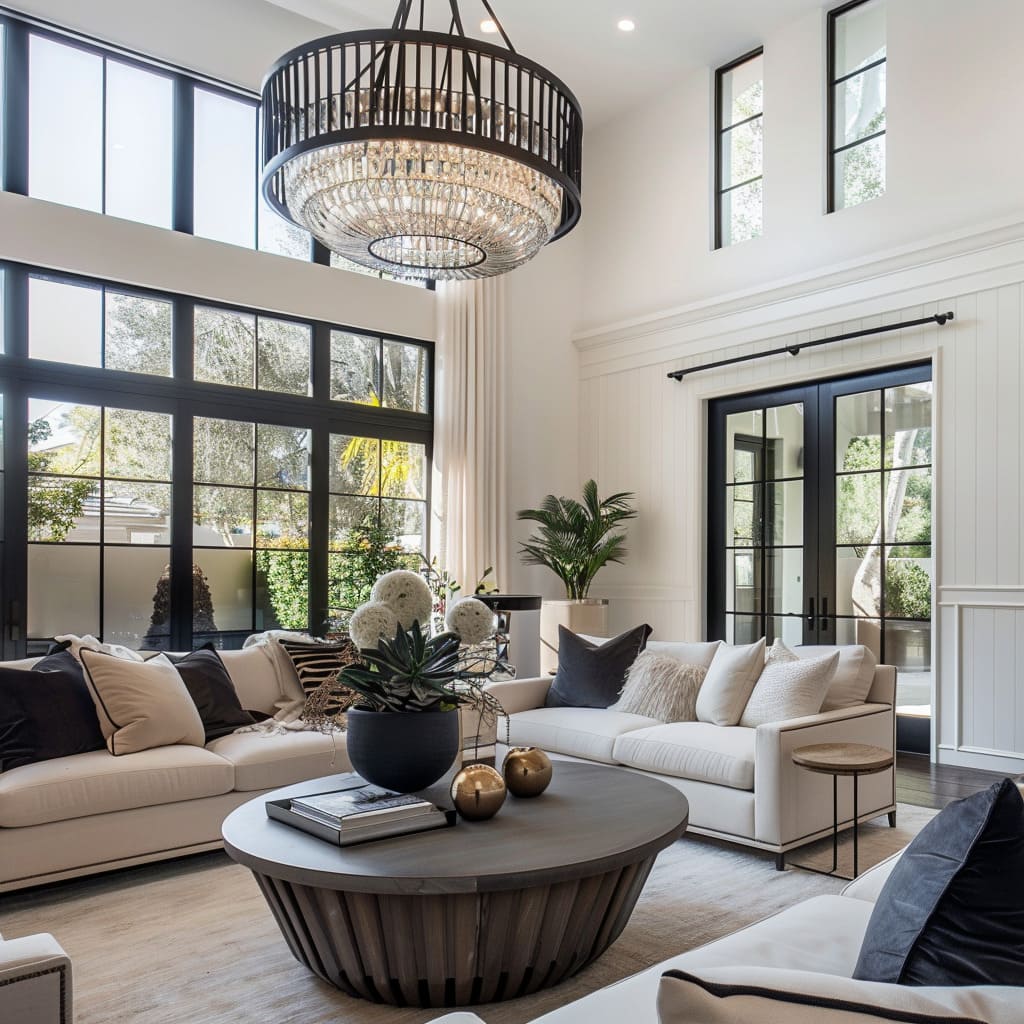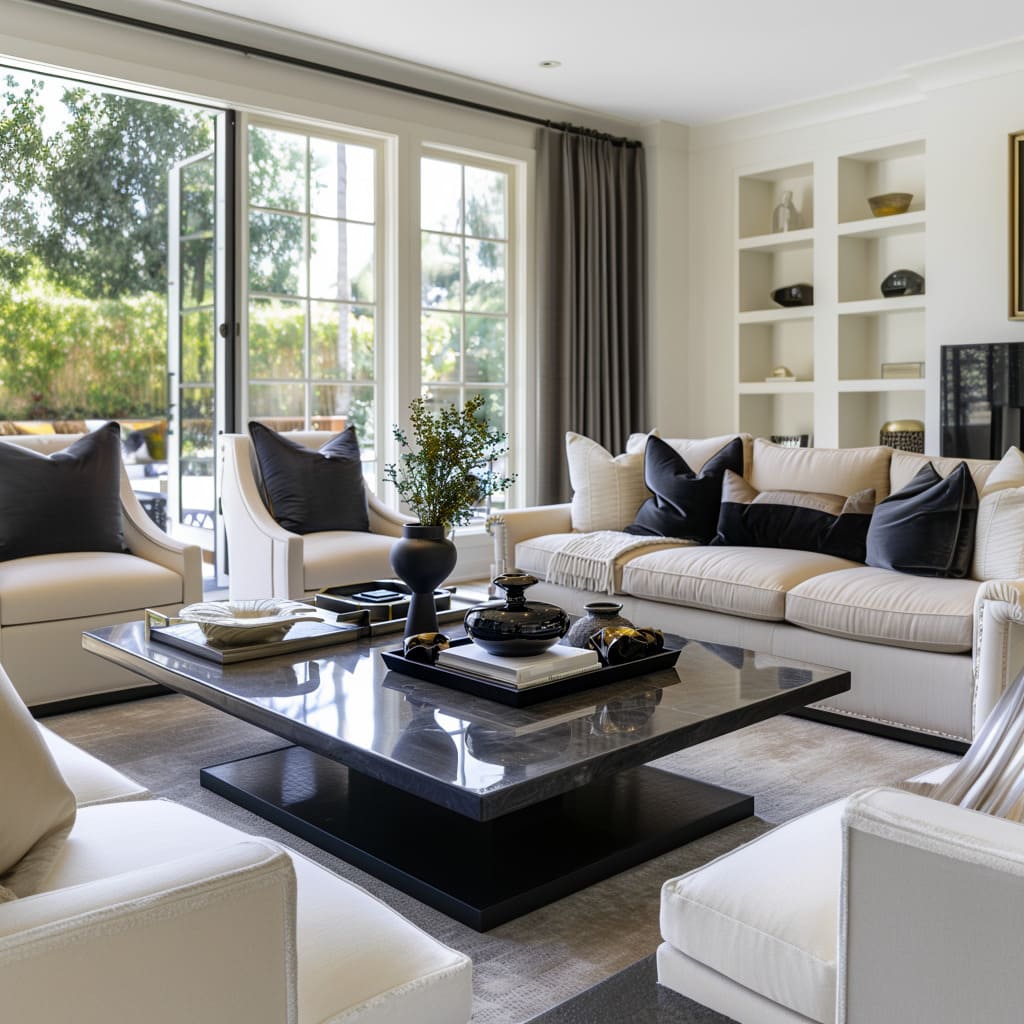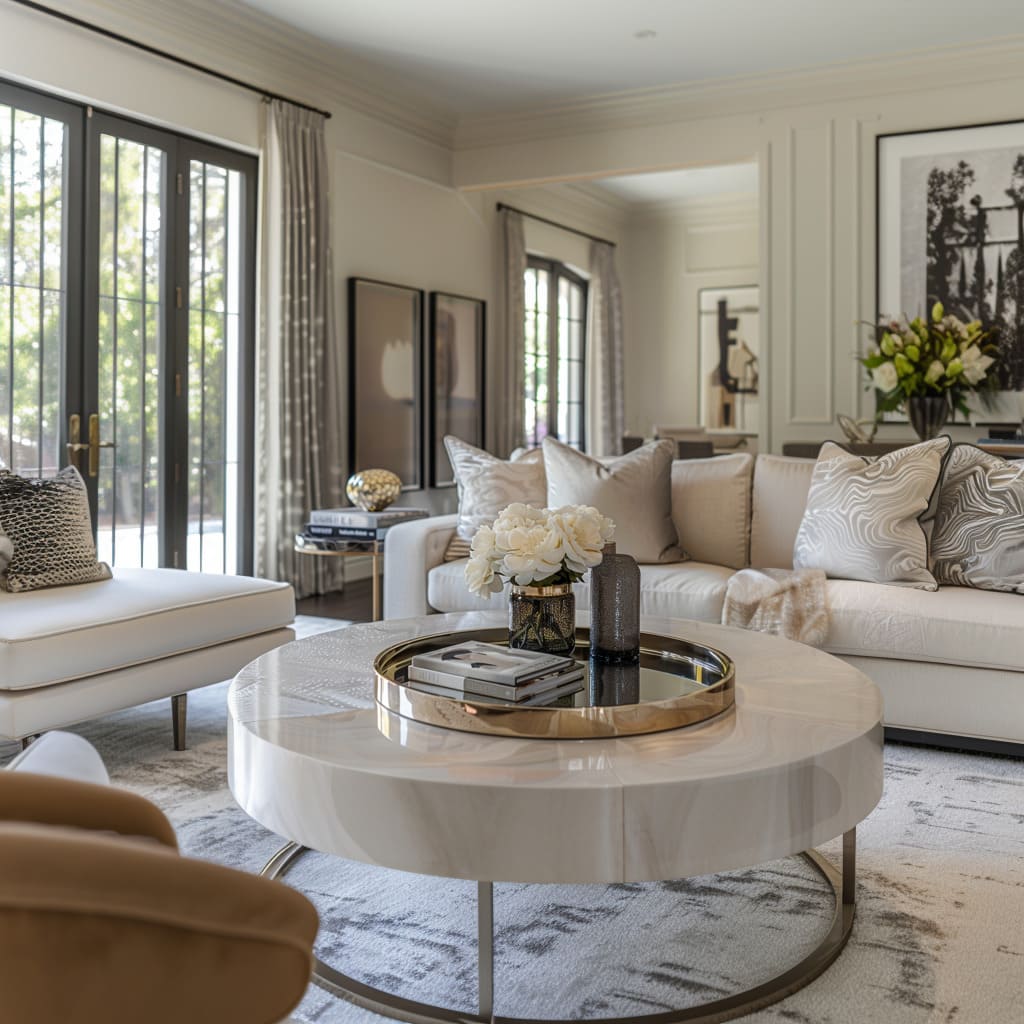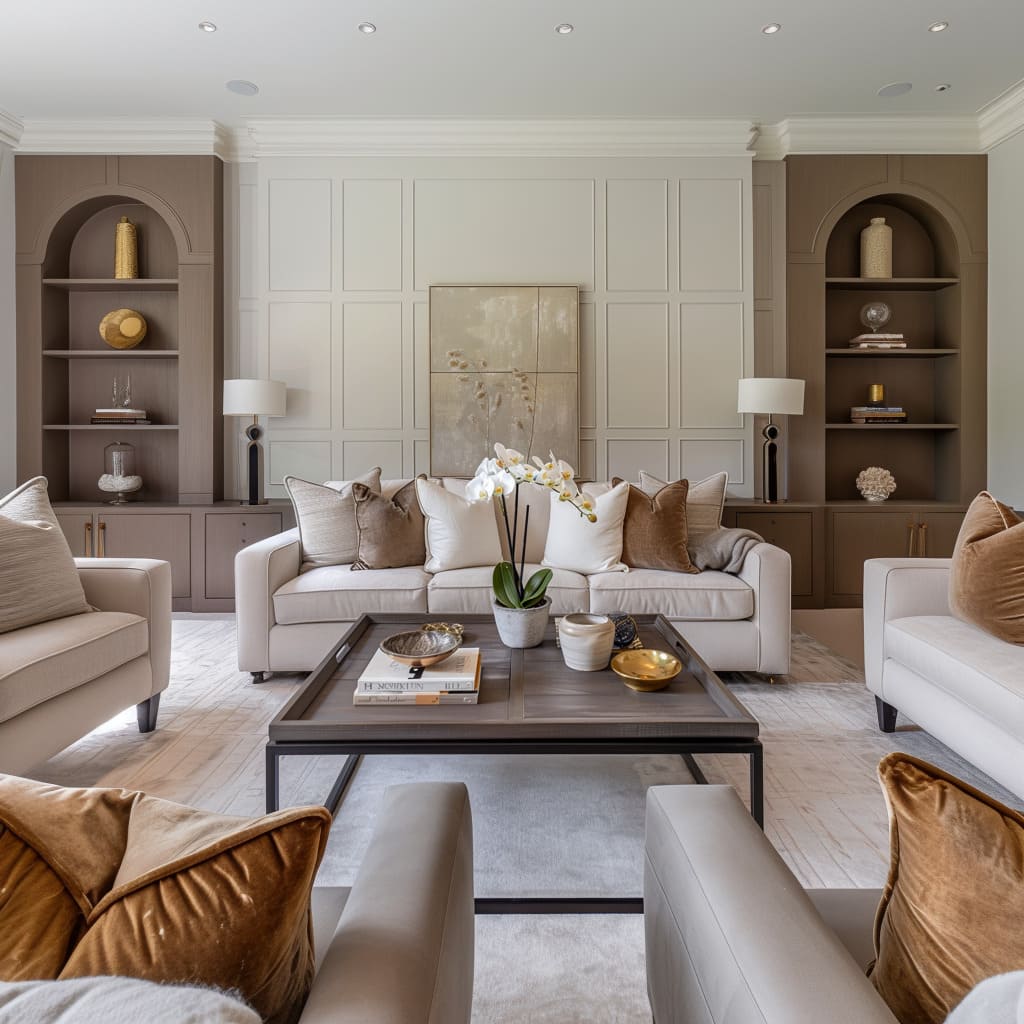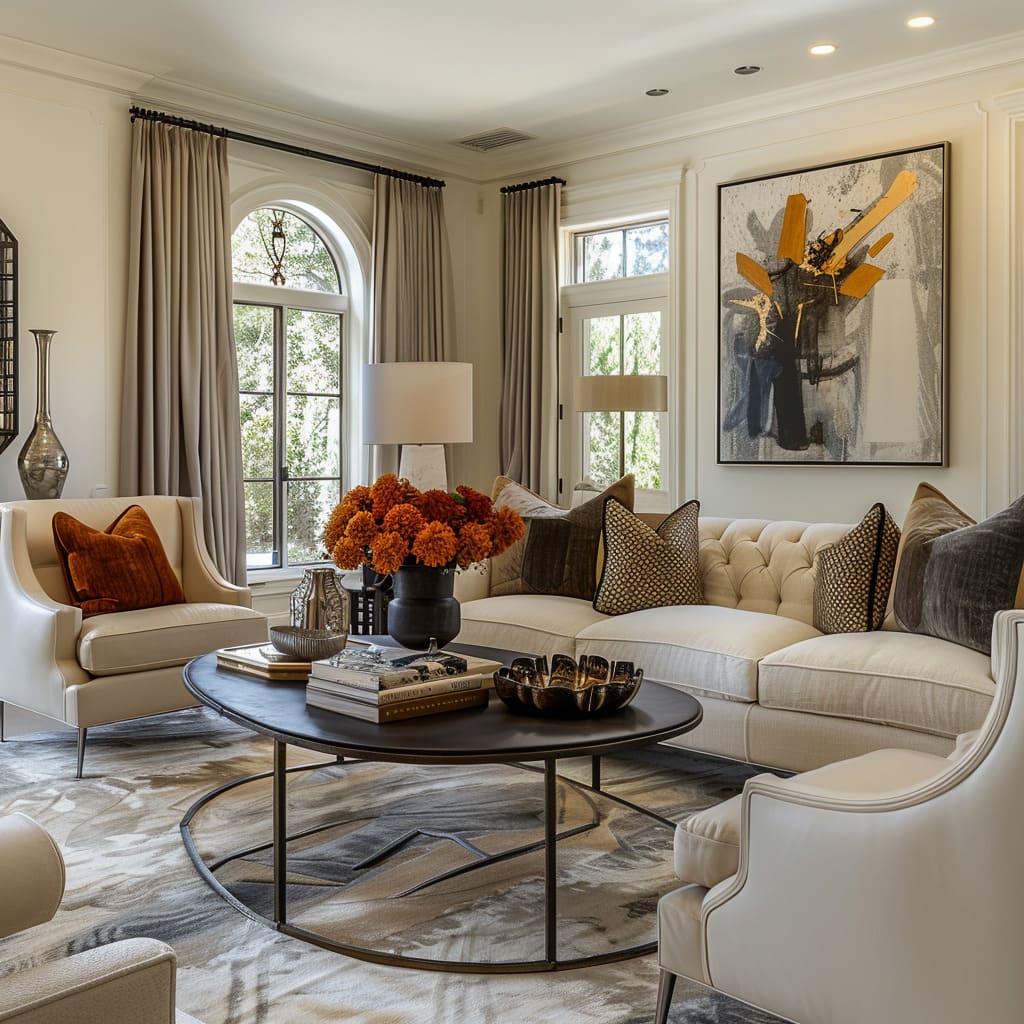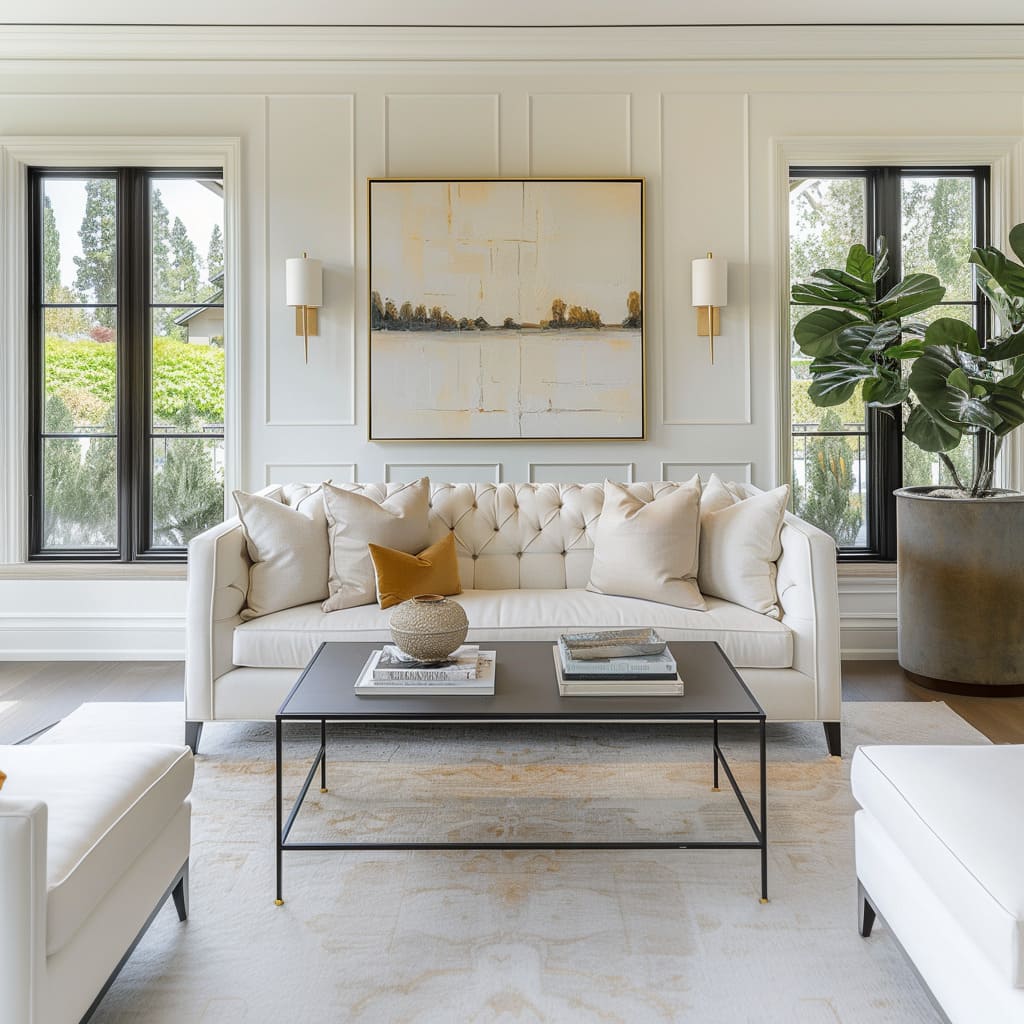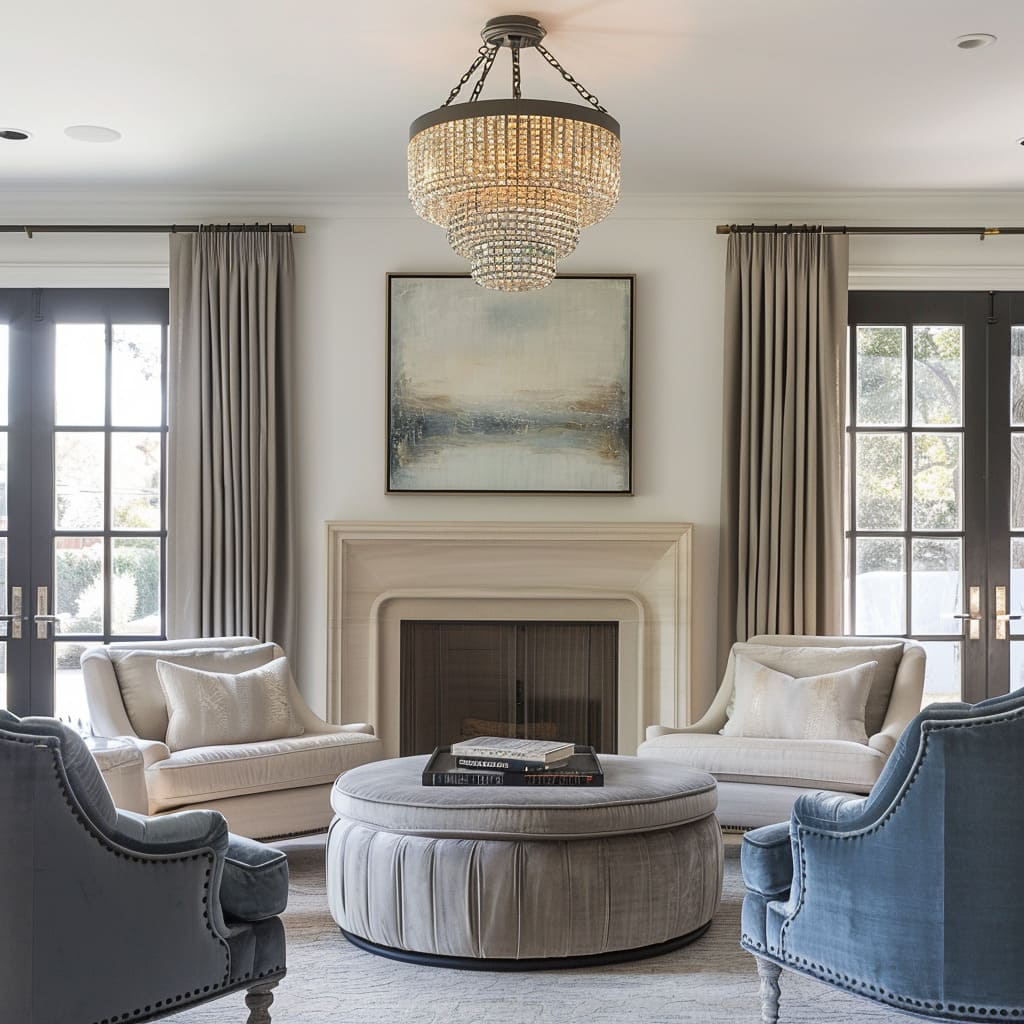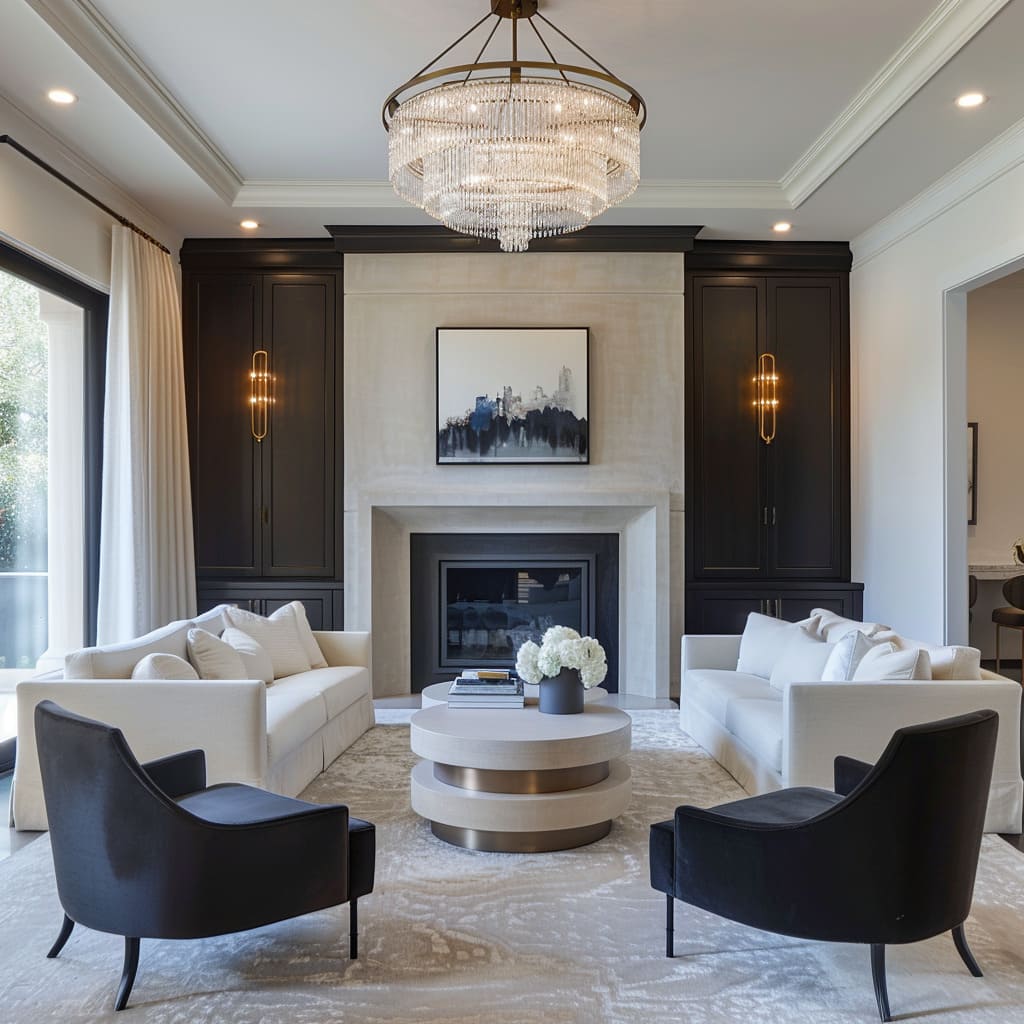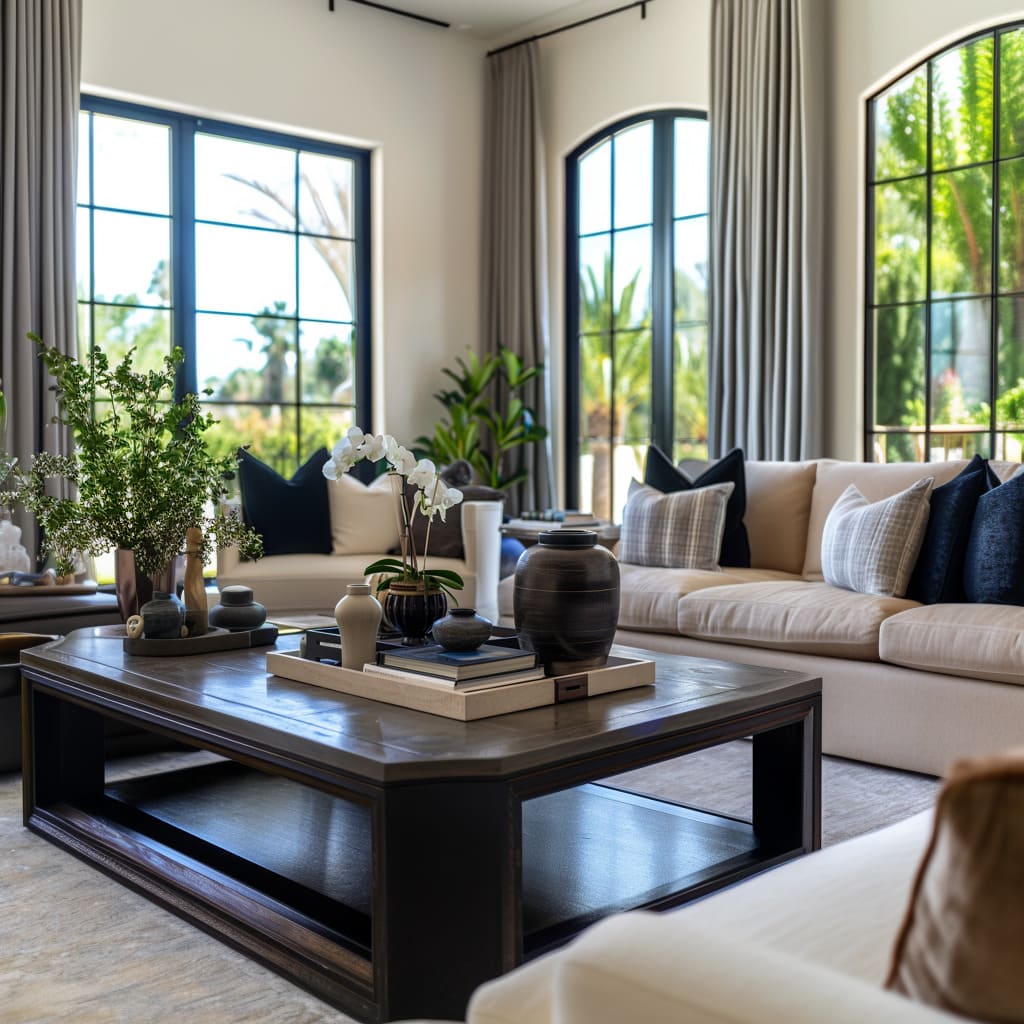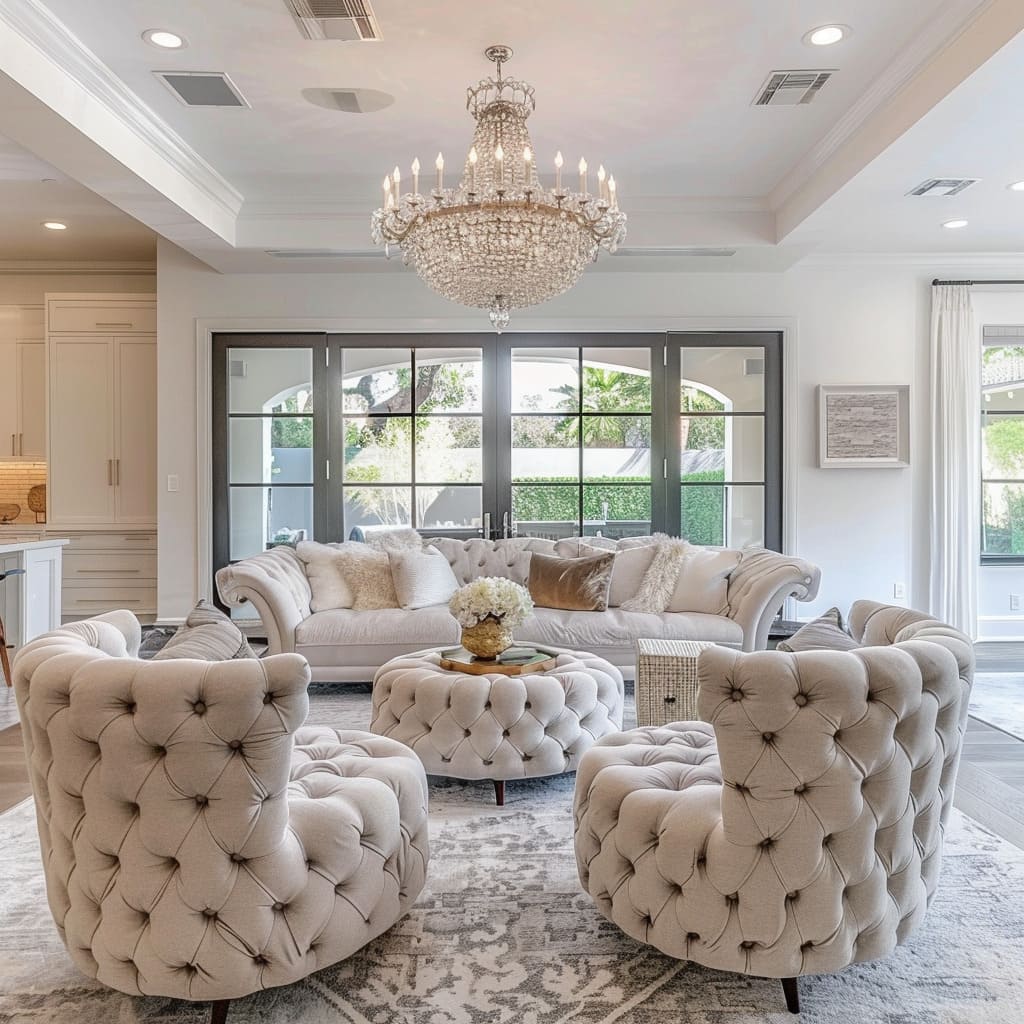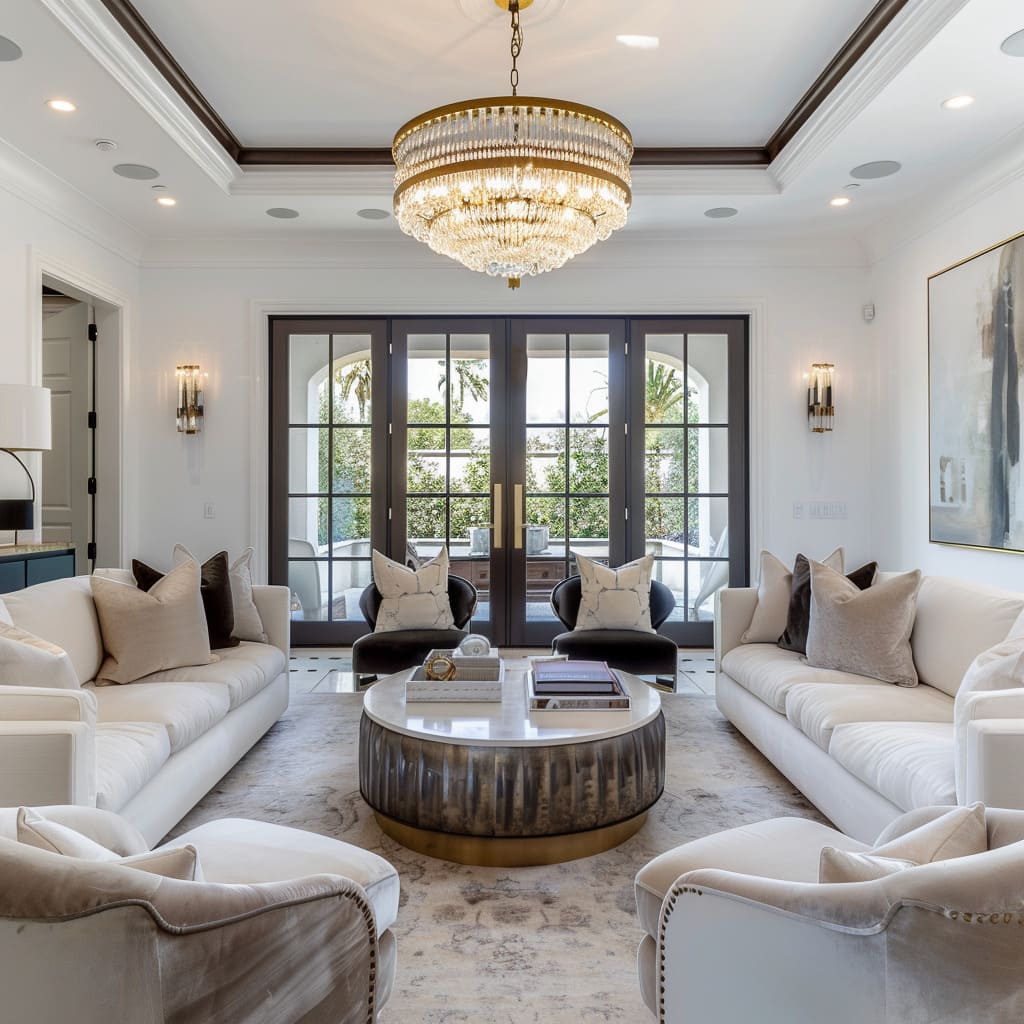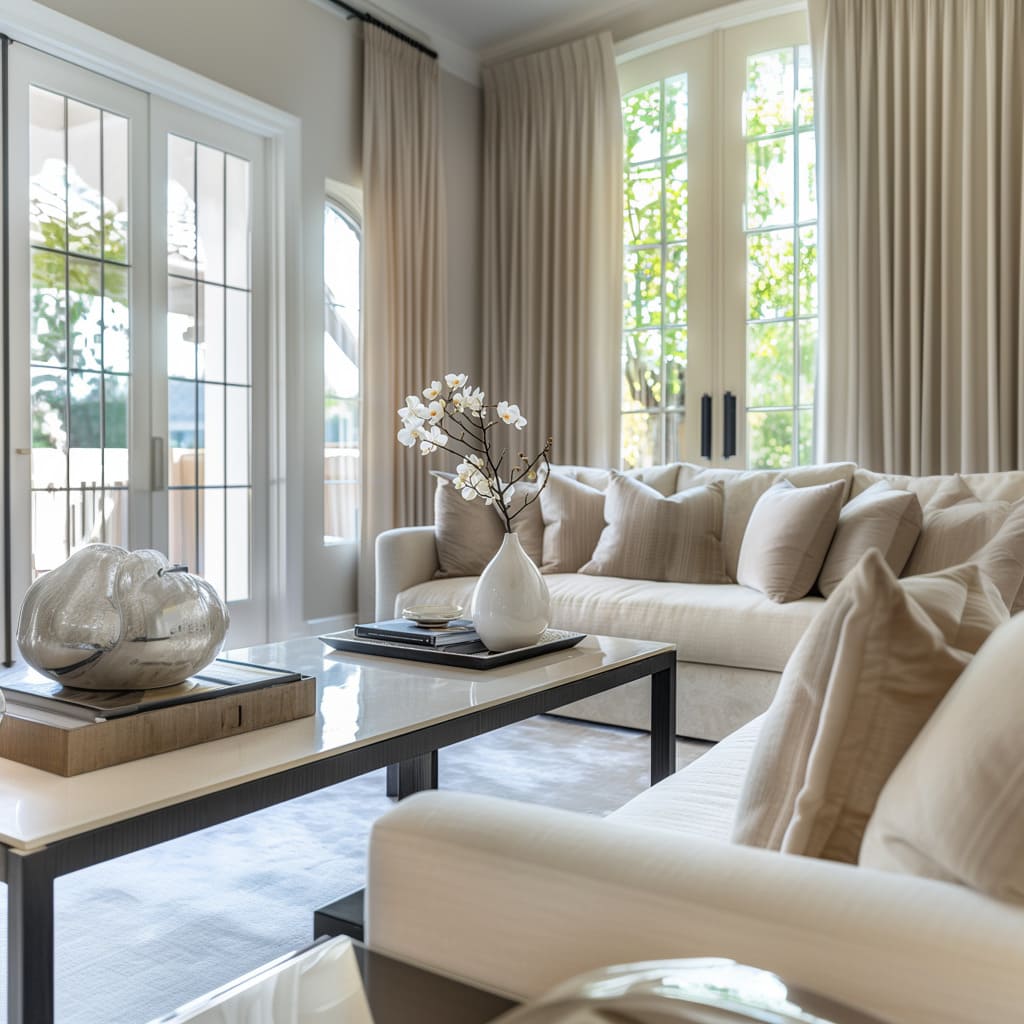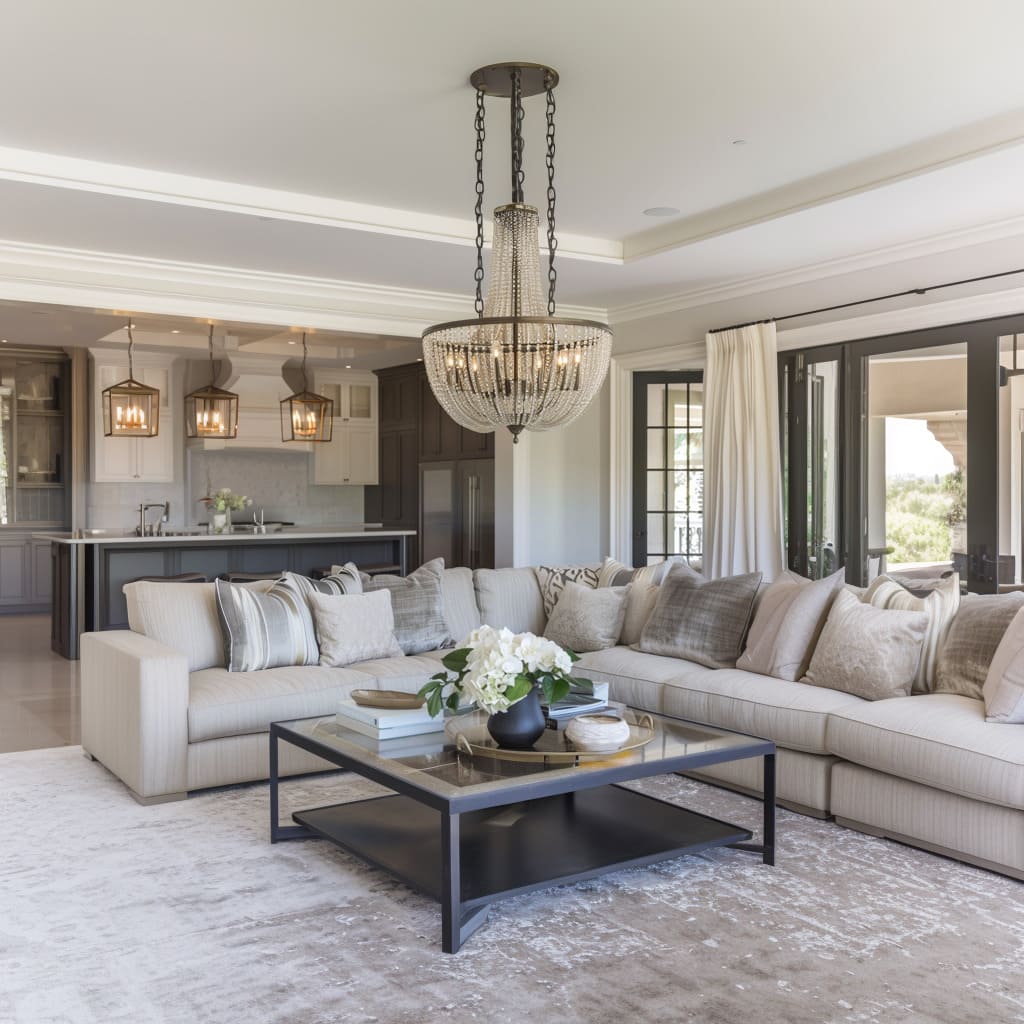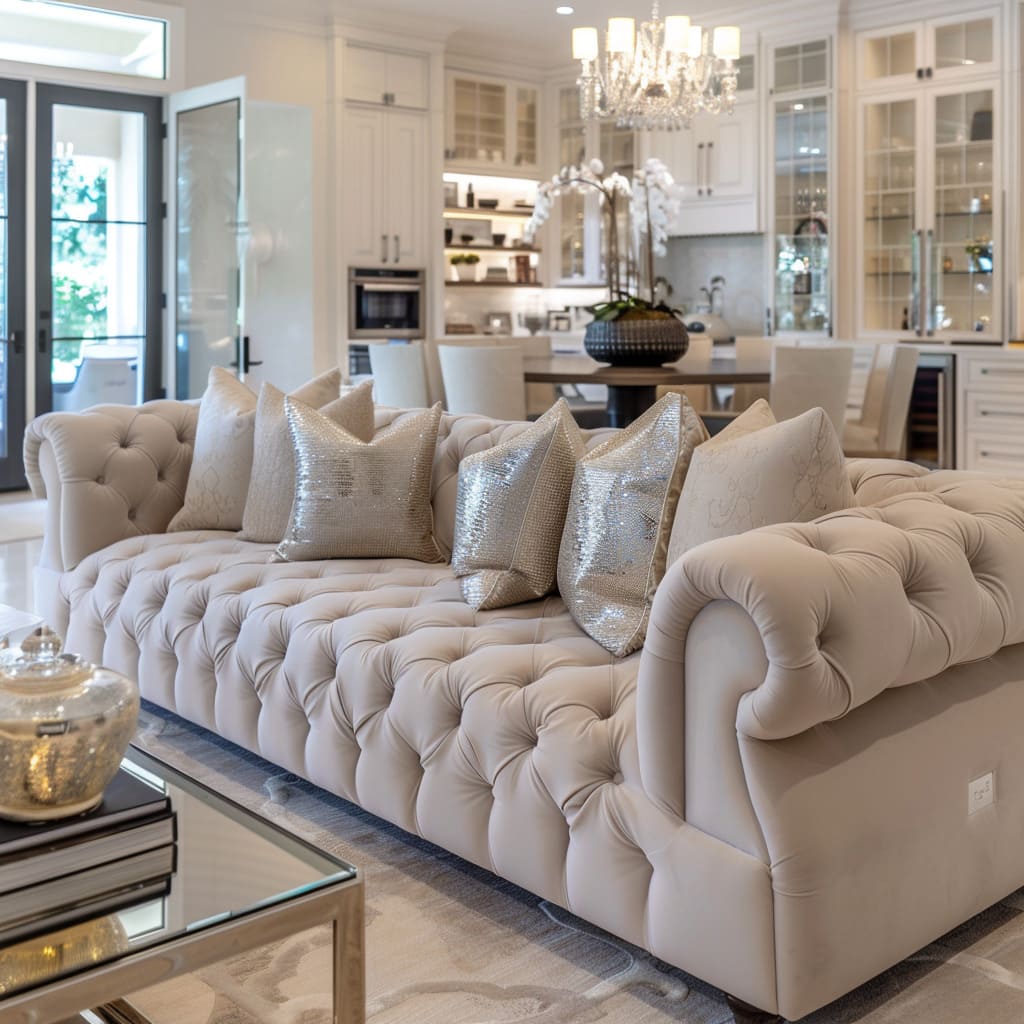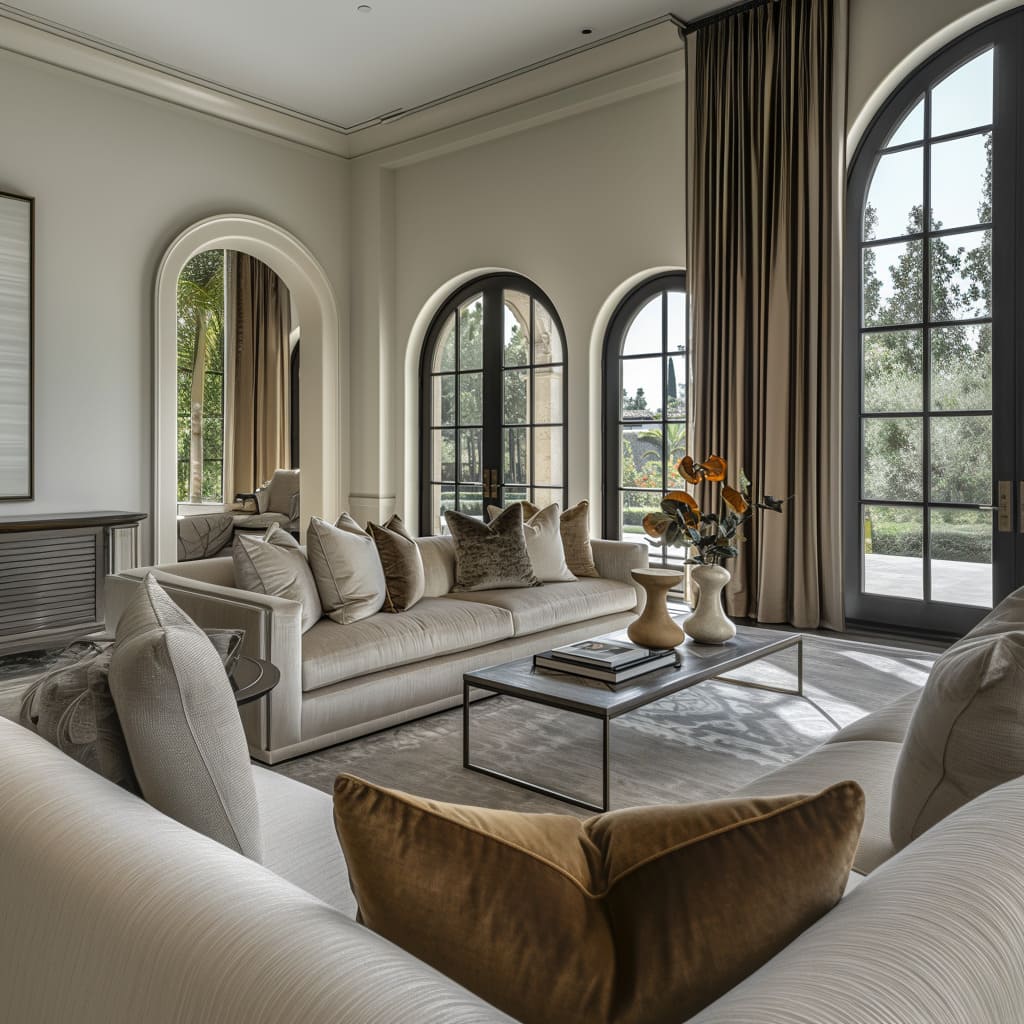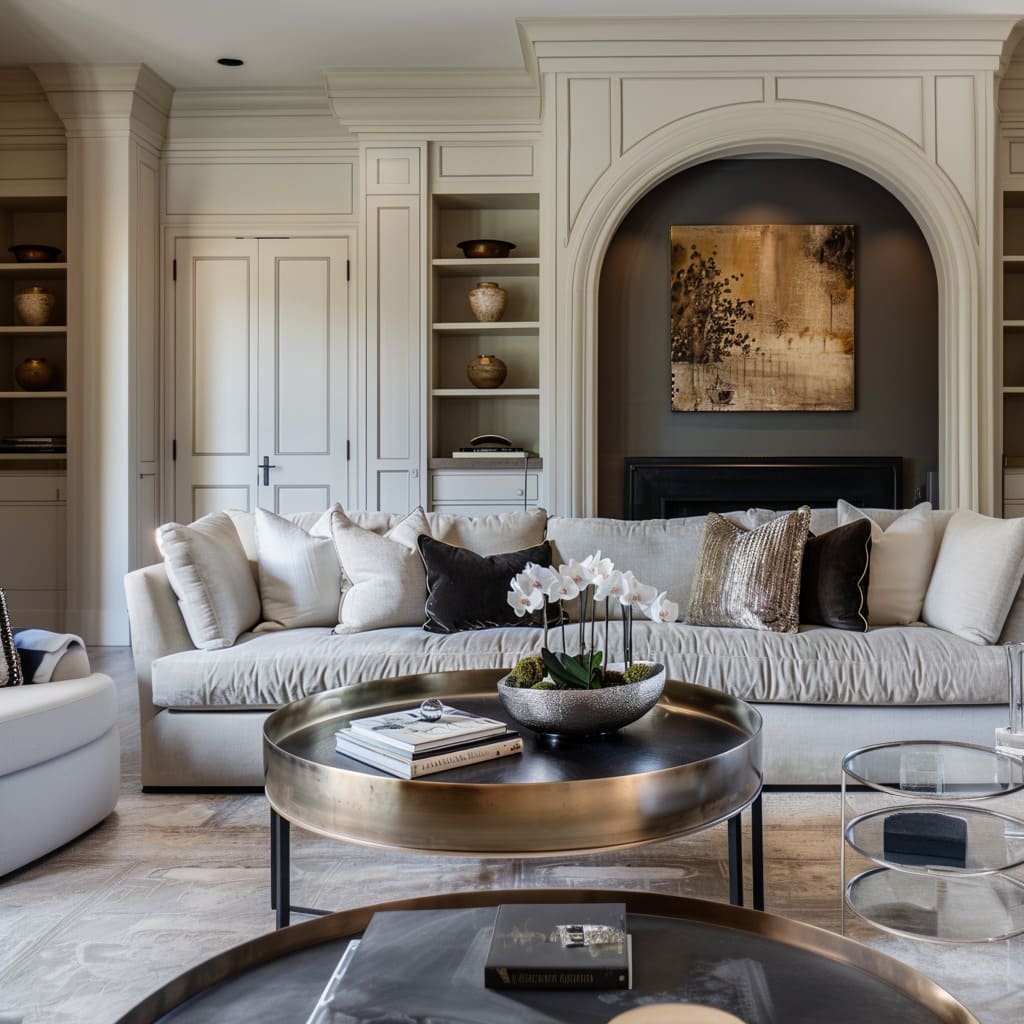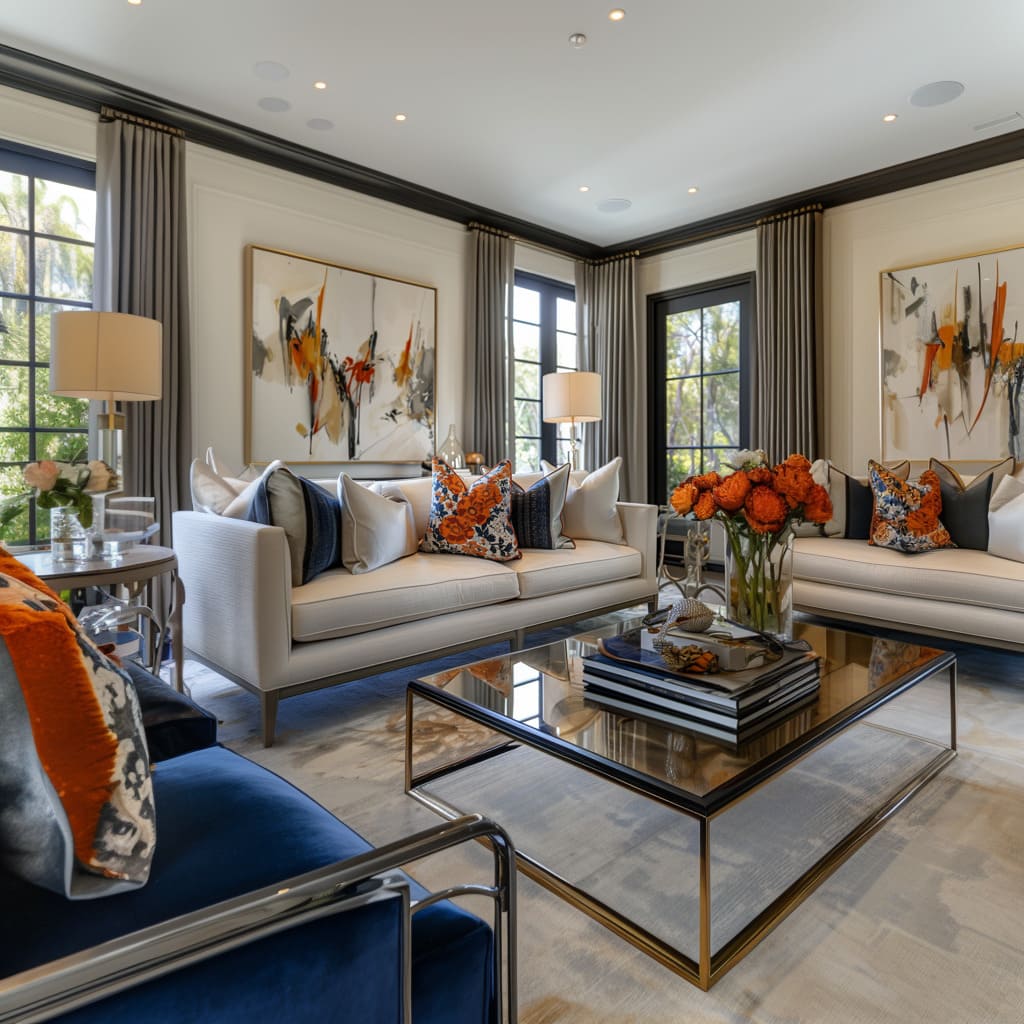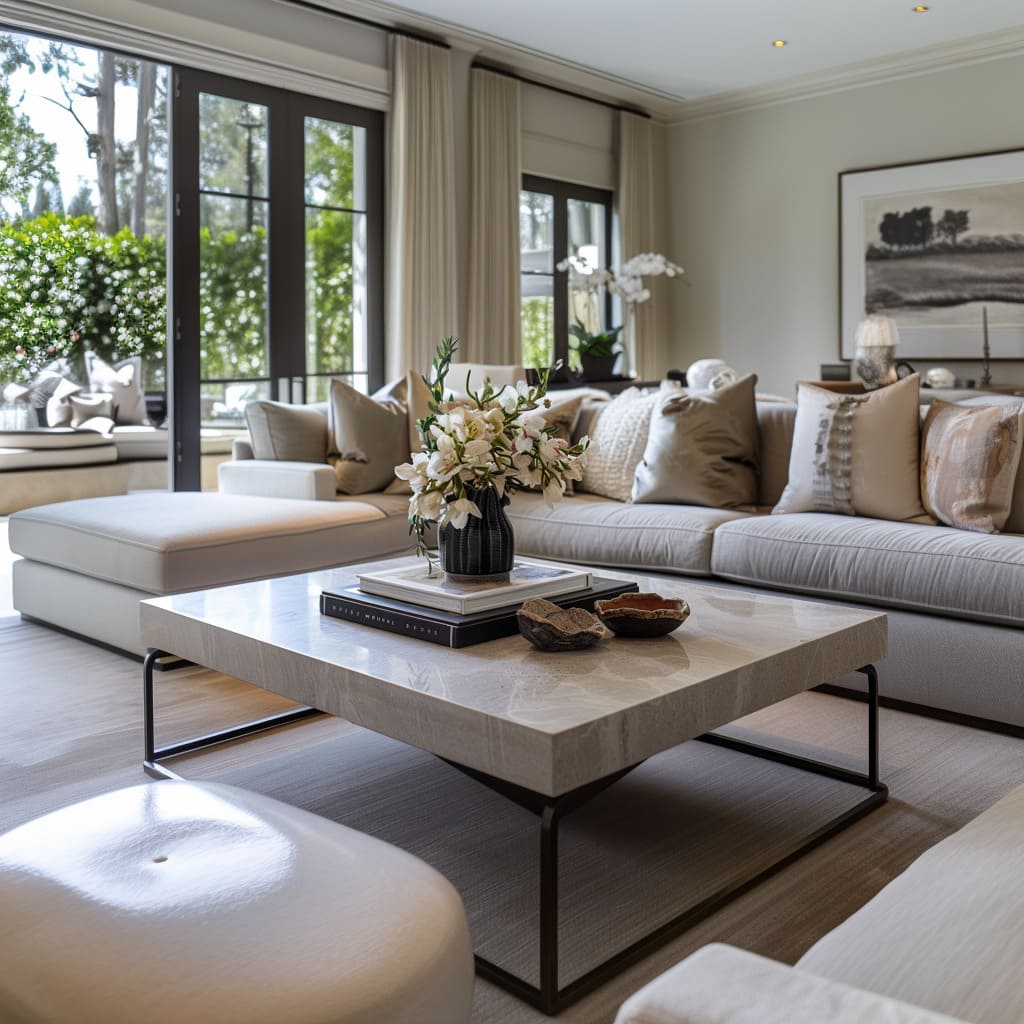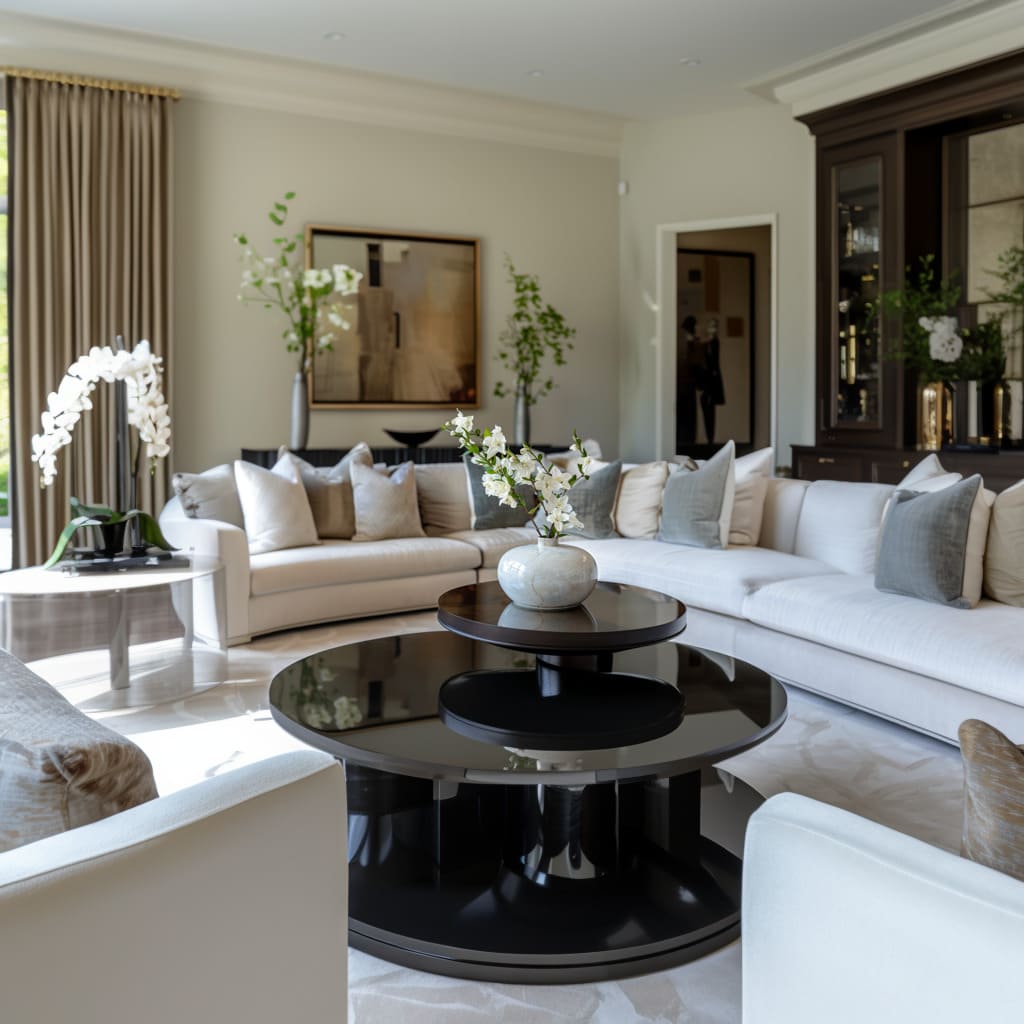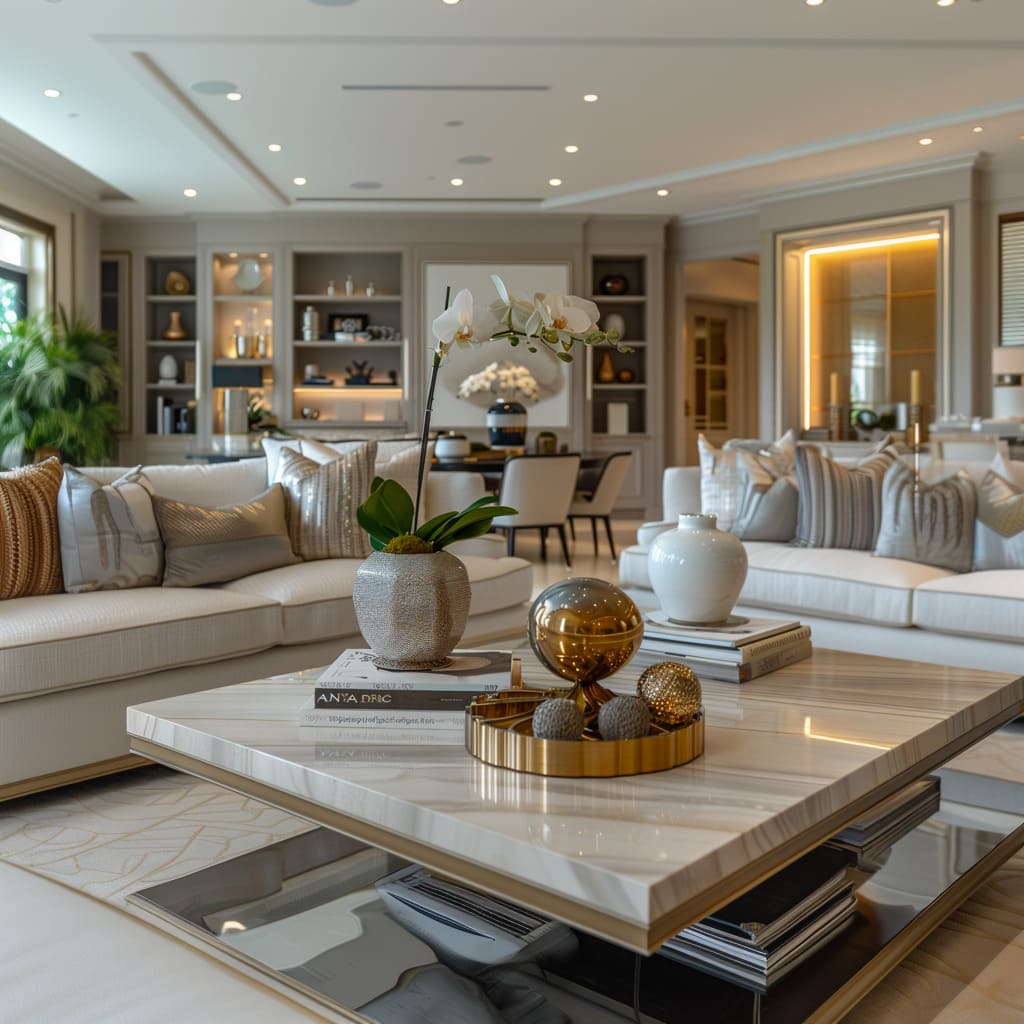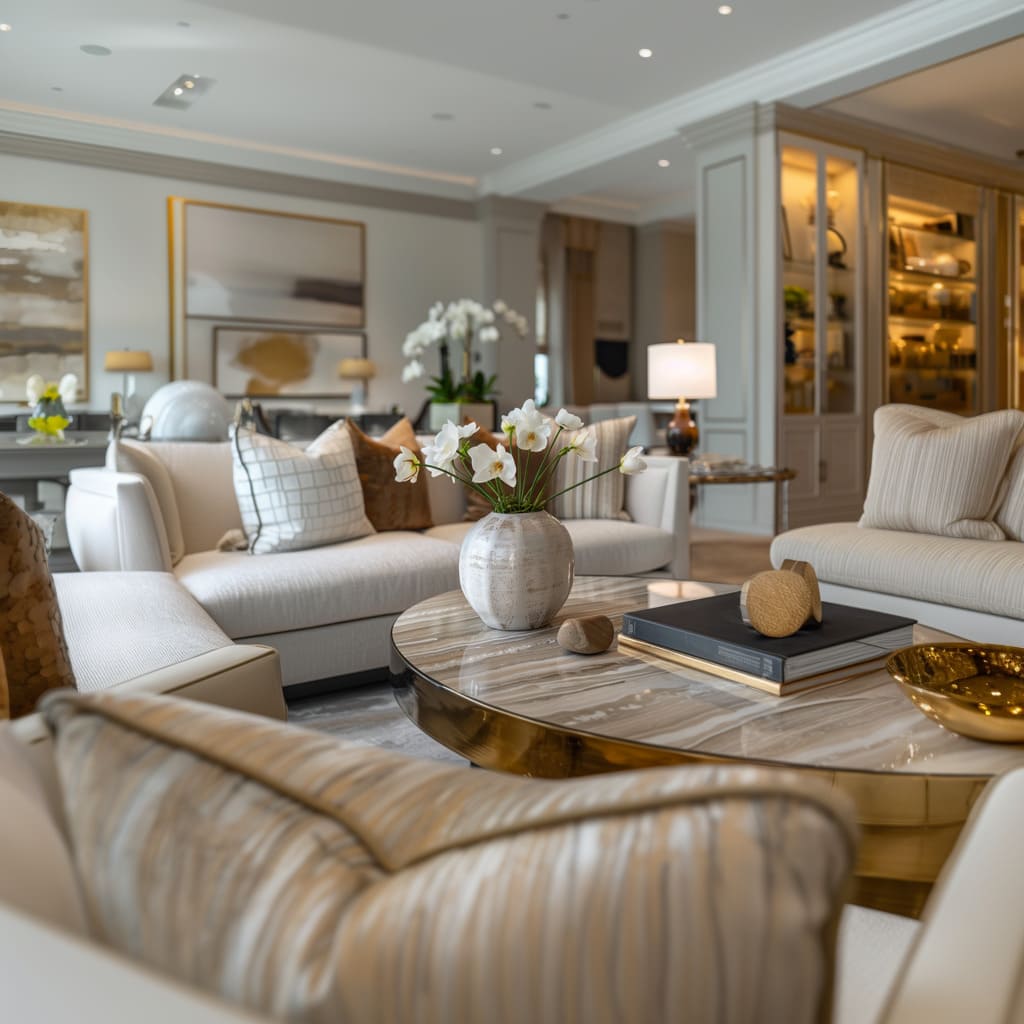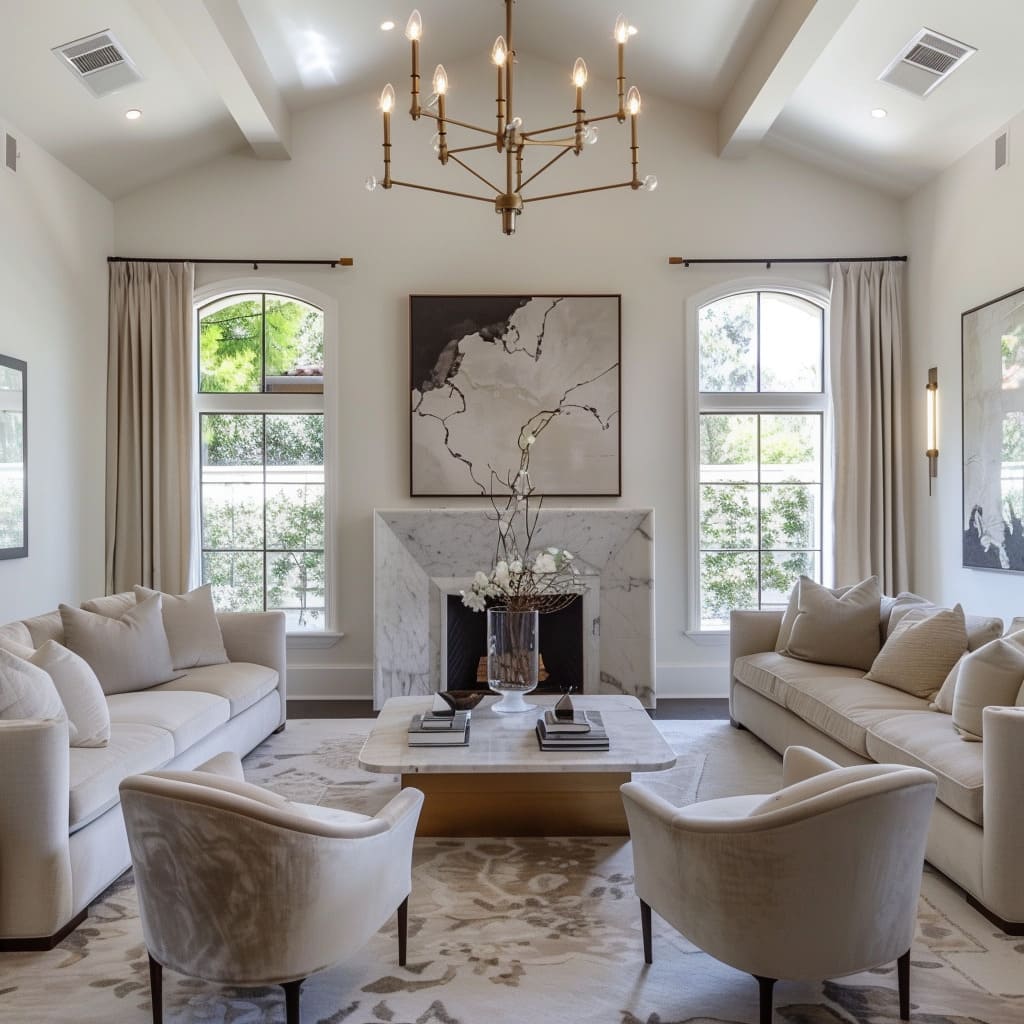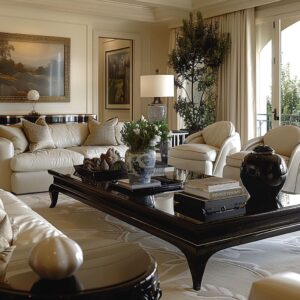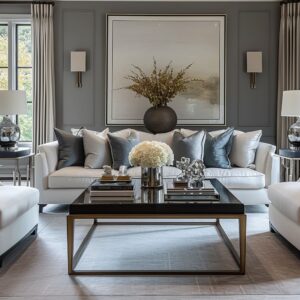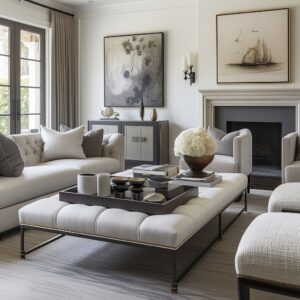The transitional style stands out for its seamless blend of traditional and contemporary elements. This approach to decor offers the perfect balance of classic elegance and modern simplicity, making it a popular choice for homeowners seeking a timeless yet current aesthetic.
The appeal of transitional decor lies in its versatility and understated sophistication, which effortlessly combines comfort with style.
A transitional style interior design captures the essence of two different worlds. It integrates the warmth and familiarity of traditional decor with the clean lines and minimalism of contemporary design.
This fusion results in spaces that are both inviting and stylish, making them suitable for a wide range of tastes and lifestyles. The neutral color palette, often characterized by shades of beige, gray, and white, provides a calm backdrop that enhances the room’s openness and light.
When it comes to transitional living room decorating ideas, the focus is on creating a harmonious space that feels both relaxed and polished. Key elements include neutral-toned walls, high ceilings, and large windows that allow natural light to flood the room.
The use of luxurious materials such as marble, glass, and polished wood adds a touch of sophistication without overwhelming the space.
Transitional living room furniture typically features clean lines and a mix of textures and fabrics. Large, comfortable sofas and armchairs upholstered in soft, neutral fabrics are often paired with sleek coffee tables and side tables.
These pieces provide both functionality and style, ensuring that the living room remains a practical yet visually appealing space.
What Dreams Can Your Budget Realize?
Enter Your Budget to See What’s on the Horizon for Your Project!
[budget_renovation_calculator]
To further enhance the transitional style, built-in shelves and carefully selected decorative items play a crucial role. These shelves not only offer storage solutions but also provide a platform for displaying curated decor that reflects the homeowner’s personal taste.
Metallic accents, fresh flowers, and abstract artwork add layers of interest and character to the room, creating a well-rounded and inviting environment.
Overall, a transitional living room is a perfect example of how traditional and contemporary elements can coexist harmoniously. By carefully selecting furniture, decor, and color schemes, homeowners can create a space that is both stylish and comfortable, reflecting the best of both worlds in transitional style interior design.
Furniture
Furniture in a transitional living room combines traditional comfort with modern simplicity. The seating usually includes large, plush sofas upholstered in neutral tones like cream, beige, or light gray.
These sofas often have clean lines and may feature tufted backs or sleek, contemporary frames. They are complemented by matching armchairs or additional seating options, such as navy blue armchairs with polished metal frames, which introduce a modern element to the space.
Decorative pillows play a crucial role in adding texture and color. The pillows come in various shades and patterns, including vibrant colors like orange or deep hues like navy blue.
These pillows are not only comfortable but also serve as accents that tie the room’s color scheme together. Side tables, often with metallic frames and glass or marble tops, are placed beside the sofas and chairs.
These tables provide convenient surfaces for lamps, books, or decorative items and add a layer of sophistication to the room.
Looking to estimate the cost of renovating your entire home or just a single room? Use our home renovation calculator to get a rough cost estimate. It’s quick, easy, and tailored to your specific renovation needs!
Lighting
Lighting in a transitional living room is integral to achieving the right ambiance. Recessed lighting is a staple, installed throughout the ceiling to ensure even and ample illumination.
This lighting type is subtle yet effective, blending seamlessly into the ceiling while providing practical lighting.
Additionally, statement pieces such as chandeliers or pendant lights often serve as the room’s focal point. These fixtures can range from modern, drum-shaped designs with crystal elements to more traditional styles with candle-like bulbs, finished in materials like brass or gold to add a touch of elegance.
Table lamps are strategically placed on side tables flanking the sofas, providing additional light and enhancing the room’s symmetry. These lamps typically feature simple white shades and bases that match the room’s color scheme.
Accent lighting, such as integrated LED strips within built-in shelves, highlights decorative items and adds a sophisticated glow. This type of lighting not only illuminates but also accentuates the architectural and design features of the room.
Coffee Table
The coffee table is a central piece in the seating area, often designed to make a statement. These tables are typically large and rectangular or round, made from materials like glass, marble, or polished wood with metal accents.
A glass top with a gold metal frame is a common choice, adding a reflective surface that enhances the room’s light and airy feel.
Decorative items on the coffee table include vases with fresh flowers or greenery, such as white orchids or orange floral arrangements. A stack of coffee table books adds a touch of personality and interest, while decorative trays and small sculptures or bowls contribute to the overall aesthetic.
These elements are carefully arranged to ensure the table looks curated and stylish.
Built-in Shelves
Built-in shelves are a frequent feature in transitional living rooms, providing both storage and display space. Painted in neutral tones like beige or white, these shelves blend seamlessly with the walls and enhance the room’s architectural interest.
Integrated lighting within the shelves highlights the decorative items displayed, such as vases, books, sculptures, and other decor pieces in metallic or neutral tones.
The decor on the shelves is thoughtfully curated to match the room’s color scheme and style. Items are arranged to create a balanced and visually appealing display, with a mix of sizes, shapes, and textures adding depth and interest.
Discover inspiring transitional style bedroom ideas in our detailed design guide here. Explore how to blend classic and contemporary elements for a sophisticated and timeless master bedroom.
Dining Area
In homes with open floor plans, the living room often flows into an adjacent dining area, creating a cohesive look and feel. This layout allows for easy movement between spaces and ensures a unified design aesthetic.
The dining area typically features a large table with comfortable chairs that match the style and color scheme of the living room.
The table is often adorned with simple yet elegant transitional style home decor, such as a centerpiece of fresh flowers or a bowl of fruit. The chairs are upholstered in fabrics that complement the living room furniture, ensuring consistency and harmony in the overall design.
The dining area’s lighting is also carefully considered, with pendant lights or a chandelier that matches the style of the living room lighting. This attention to detail helps to maintain a seamless transition between the two spaces, reinforcing the unified aesthetic.
Explore our comprehensive guide for innovative ideas on creating a contemporary transitional bathroom. Learn how to combine practicality with beauty to design a space that is both functional and stylish.
Walls and Ceiling
The walls in a transitional living room are commonly painted in soft, neutral tones like beige or white. These colors provide a clean and versatile backdrop that enhances the room’s brightness and makes the space feel more open.
Architectural details such as wainscoting or coffered ceilings add texture and a touch of traditional elegance. These features are often painted in the same neutral tones, ensuring they complement rather than overpower the room’s overall look.
The ceiling is usually high and white, featuring recessed lighting to ensure even illumination. Black trim around the ceiling and window frames can add a contemporary contrast and a bit of dramatic interest.
These details highlight the transitional nature of the design, blending modern and traditional elements seamlessly. Crown molding and tray ceilings are also popular, adding depth and architectural interest.
Flooring and Rug
The flooring in a transitional living room is typically light hardwood, which adds warmth and a natural element to the space. This choice of flooring is both practical and stylish, offering a durable surface that complements the room’s neutral color palette.
The wood’s light tones help to reflect light, enhancing the room’s airy feel.
Covering the floor is a large area rug in a light, neutral color with a subtle pattern. The rug helps to define the seating area and adds comfort underfoot.
Its design and color are chosen to blend seamlessly with the overall aesthetic, enhancing the room’s cohesive look. The rug’s soft texture contrasts beautifully with the hard surface of the wood floor, adding an additional layer of comfort and luxury.
Fireplace
A fireplace, while optional, is a common feature in many transitional living rooms. It often serves as a central focal point, framed by a classic mantelpiece and sometimes adorned with artwork or a mirror above.
The surround is usually made of materials like marble or stone, adding a touch of traditional elegance. These materials are chosen for their timeless appeal and ability to complement a variety of decor styles.
The fireplace area can be further enhanced with decorative items such as vases, candles, or small sculptures. These elements add warmth and character to the space, making the fireplace a cozy and inviting feature.
A fire screen with a sleek, modern design can add a contemporary touch, balancing the traditional elements of the fireplace surround.
Windows and Curtains
Large windows are a hallmark of transitional living rooms, allowing plenty of natural light to flood the space. These windows often have black frames, which add a subtle contemporary contrast to the light-colored walls.
Floor-length curtains in soft, neutral colors frame the windows, adding a touch of sophistication and providing options for privacy and light control.
The curtains are often slightly pleated, contributing to the room’s formal yet inviting feel. The use of high-quality fabrics ensures that the curtains drape beautifully and add an additional layer of texture and warmth to the room.
In some designs, sheer curtains may be used behind the main drapes to diffuse the light softly and maintain privacy while allowing natural light to filter through.
Additional Decor
Decorative items play a significant role in adding personality and style to a transitional living room. Transitional home decor items include such transitional home decor as vases with flowers or greenery, decorative bowls, books, and small sculptures.
Metallic accents in gold or silver are often used to add a touch of luxury. The careful selection and placement of these items help to create a balanced and inviting space.
Mirrors and artwork are also common decorative elements. Large, abstract paintings in complementary colors can serve as focal points on the walls, while strategically placed mirrors enhance the sense of space and light.
The decor is typically arranged to ensure a cohesive look, with a mix of sizes, shapes, and textures adding depth and interest.
Overall Ambiance
A transitional living room exudes a sense of refined comfort, achieved through the careful selection of high-quality materials and a balanced mix of traditional and contemporary elements. The neutral color palette creates a calming backdrop, while bold accents and curated decor add interest and sophistication.
The overall ambiance is one of warmth and elegance, making it an ideal space for both relaxation and entertaining. Large windows and thoughtful lighting enhance the room’s brightness, while the combination of clean lines and classic details ensures a timeless appeal.
This style perfectly balances the old and the new, creating a harmonious and inviting environment that feels both sophisticated and welcoming. The result is a living space that is stylish yet comfortable, perfect for modern living.
In conclusion, the transitional style living room offers a unique and appealing blend of traditional and contemporary elements, making it a versatile choice for modern homes. This approach to home decor transitional style emphasizes a balanced mix of classic and modern, resulting in spaces that are both stylish and comfortable.
By incorporating key features such as neutral color palettes, clean-lined furniture, and a thoughtful combination of textures and materials, transitional interior decor creates an inviting and sophisticated environment. The integration of built-in shelves, carefully selected decorative items, and strategic lighting further enhances the overall aesthetic, providing practical and visually appealing solutions.
For those seeking to update their homes with a fresh yet timeless look, transitional decorating ideas offer endless possibilities. Whether you’re furnishing a new space or refreshing an existing one, the principles of transitional style can guide you in creating a cohesive and elegant living room.
Ultimately, a transitional style living room not only reflects the best of both worlds but also adapts to a wide range of personal tastes and preferences. With its emphasis on comfort, style, and balance, this decorating style remains a popular choice for those looking to achieve a refined and welcoming home environment.

